17 Must-visit Temples and Shrines in Kyoto

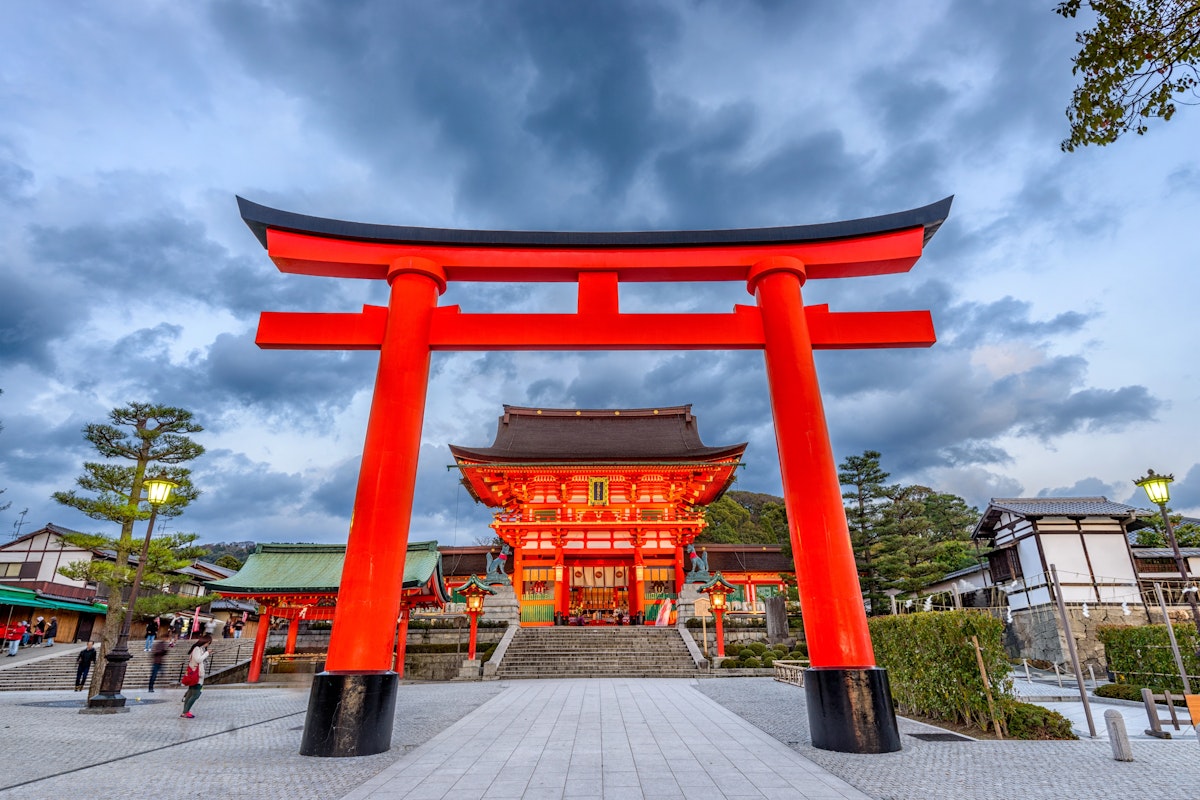
Kyoto, a city at the core of Japan's historical tapestry, boasts an array of stunning and culturally vital temples and shrines. Iconic landmarks like the golden and silver pavilions, alongside tranquil Zen temples and lively Shinto shrines, showcase a harmonious mix of spiritual tradition and architectural elegance.
In this blog post, we'll explore Kyoto's most remarkable temples and shrines, delving into their historical backgrounds and significance. Additionally, we'll offer practical advice for those planning to visit these captivating sites.
Best Temples and Shrines in Kyoto
Kinkaku-ji Temple (Golden Pavilion)
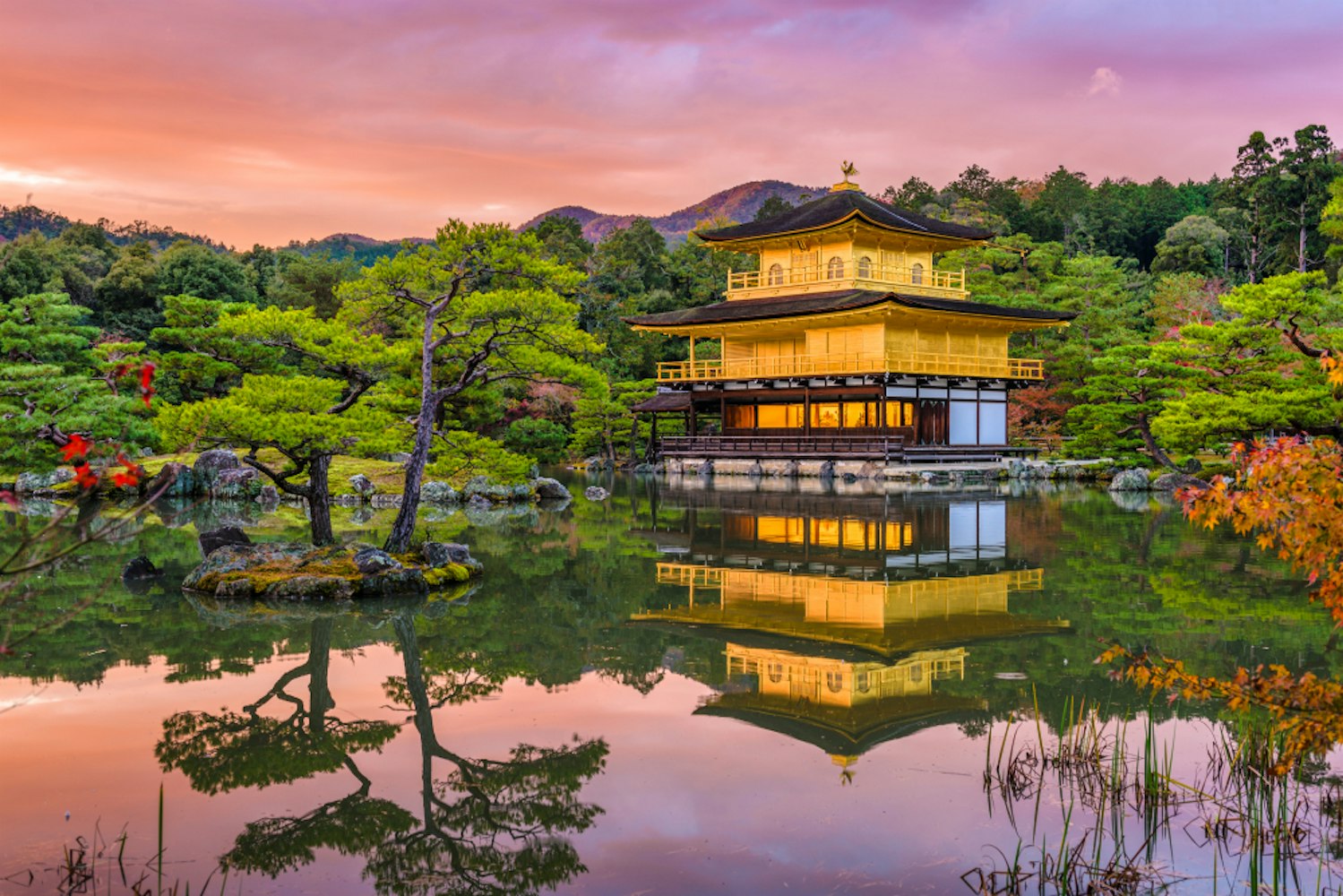
Kinkaku-ji, known as the Golden Pavilion, is a celebrated Zen Buddhist temple in northern Kyoto. Officially named Rokuon-ji, this temple was initially the retirement villa of Shogun Ashikaga Yoshimitsu, and after he died in 1408, it was transformed into a Zen temple of the Rinzai sect.
The temple's most striking feature is its top two floors, completely covered in gold leaf, showcasing an architectural grandeur that has made it one of the most famous structures in Kyoto. Additionally, Kinkaku-ji is a UNESCO World Heritage Site representing Japan's significant historical and cultural landmark.
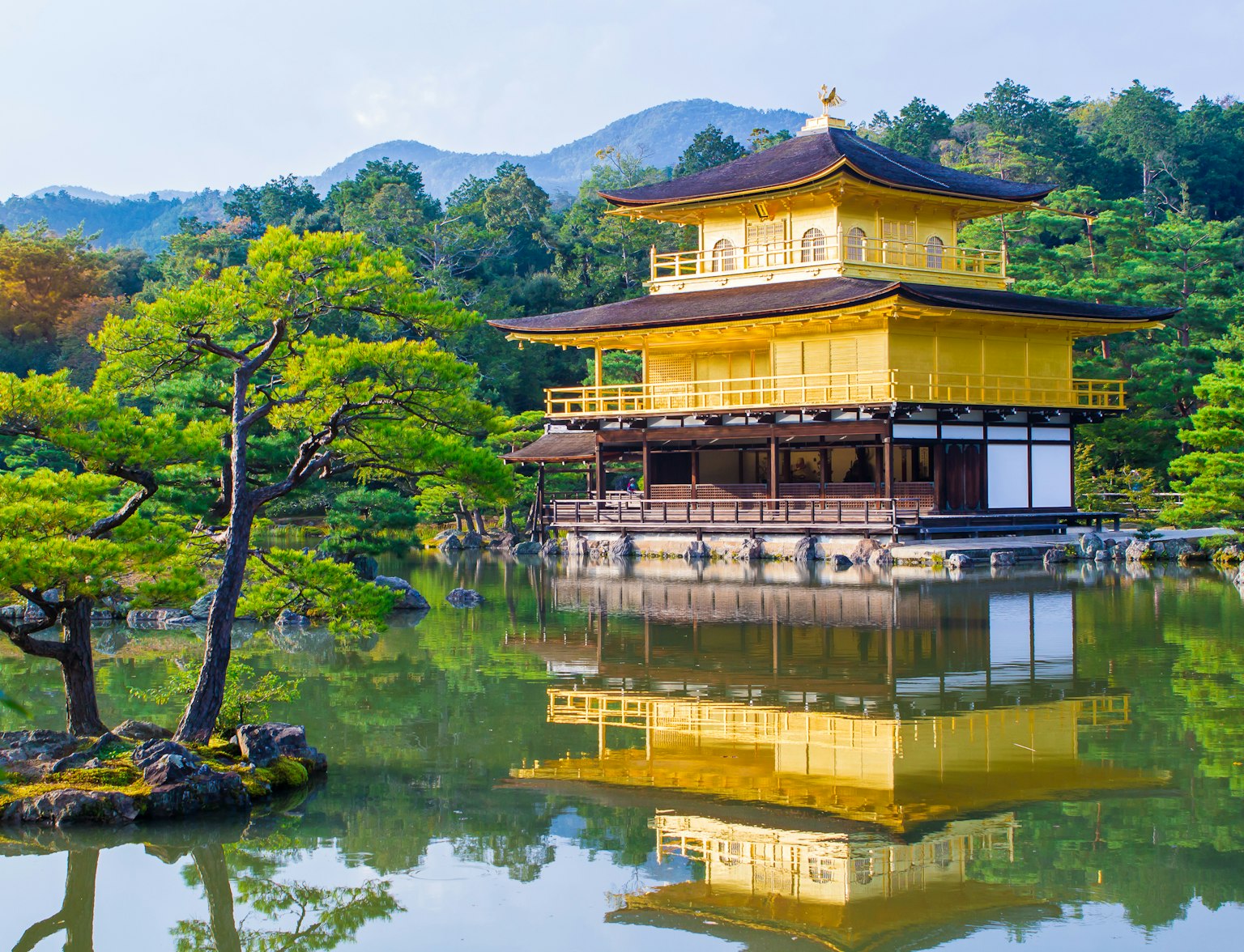
Visit Kinkaku-ji with your custom itinerary.
Ginkaku-ji Temple (Silver Pavilion)
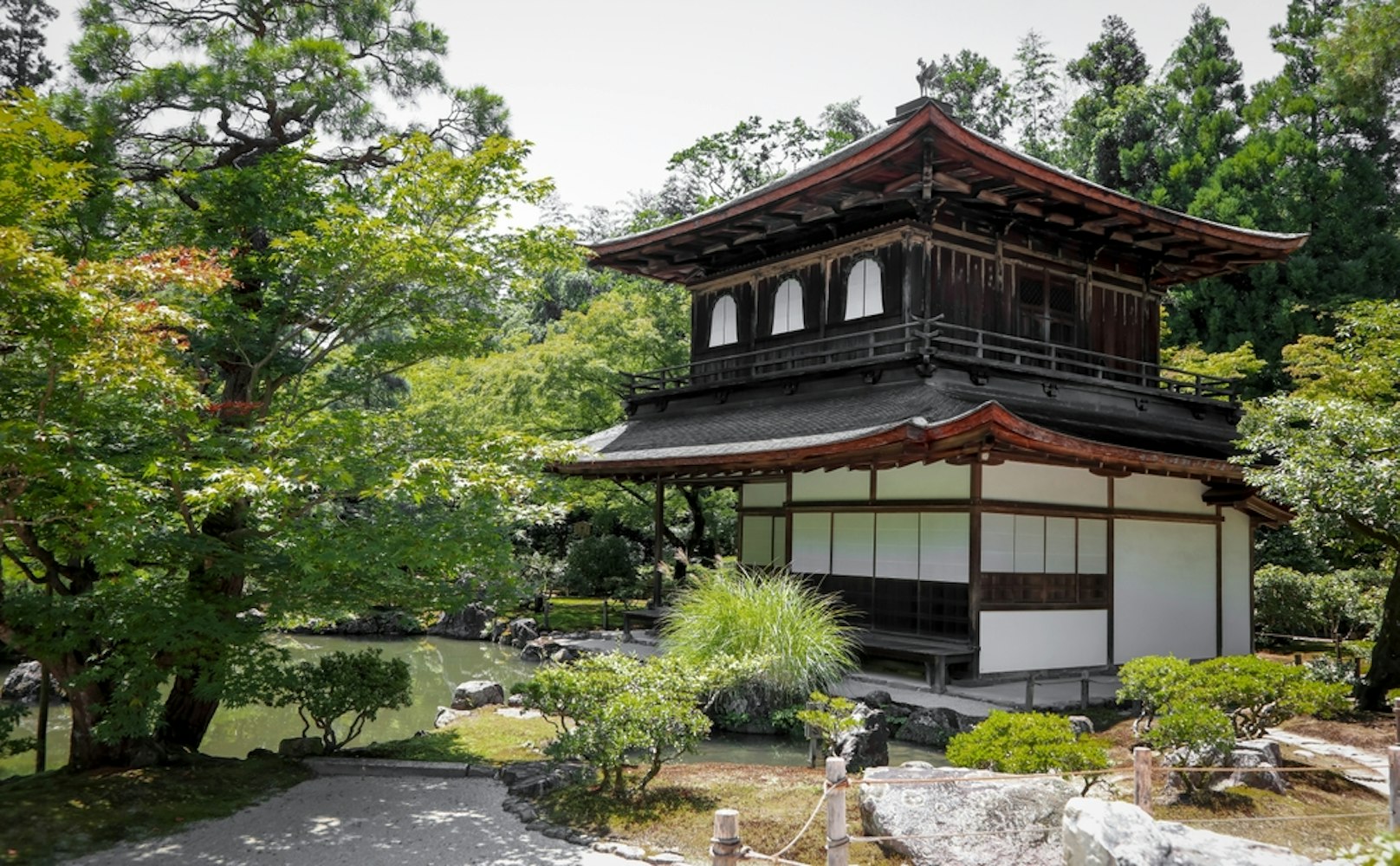
Ginkaku-ji, officially known as Jisho-ji, is a Zen temple along the eastern mountains of Kyoto, specifically in the Higashiyama area. It was initially constructed in 1482 as a retirement villa for the shogun Ashikaga Yoshimasa and later converted into a Zen temple after he died in 1490.
Ginkaku-ji is renowned for its elegant design, set within picturesque grounds that showcase exemplary Japanese landscape architecture. Despite its name, the Silver Pavilion, it was never actually covered in silver; the name is believed to have arisen much later, either as a contrast to the Golden Pavilion (Kinkaku-ji) or due to the moonlight reflecting off its dark exterior, giving it a silvery appearance.
Fushimi Inari Shrine
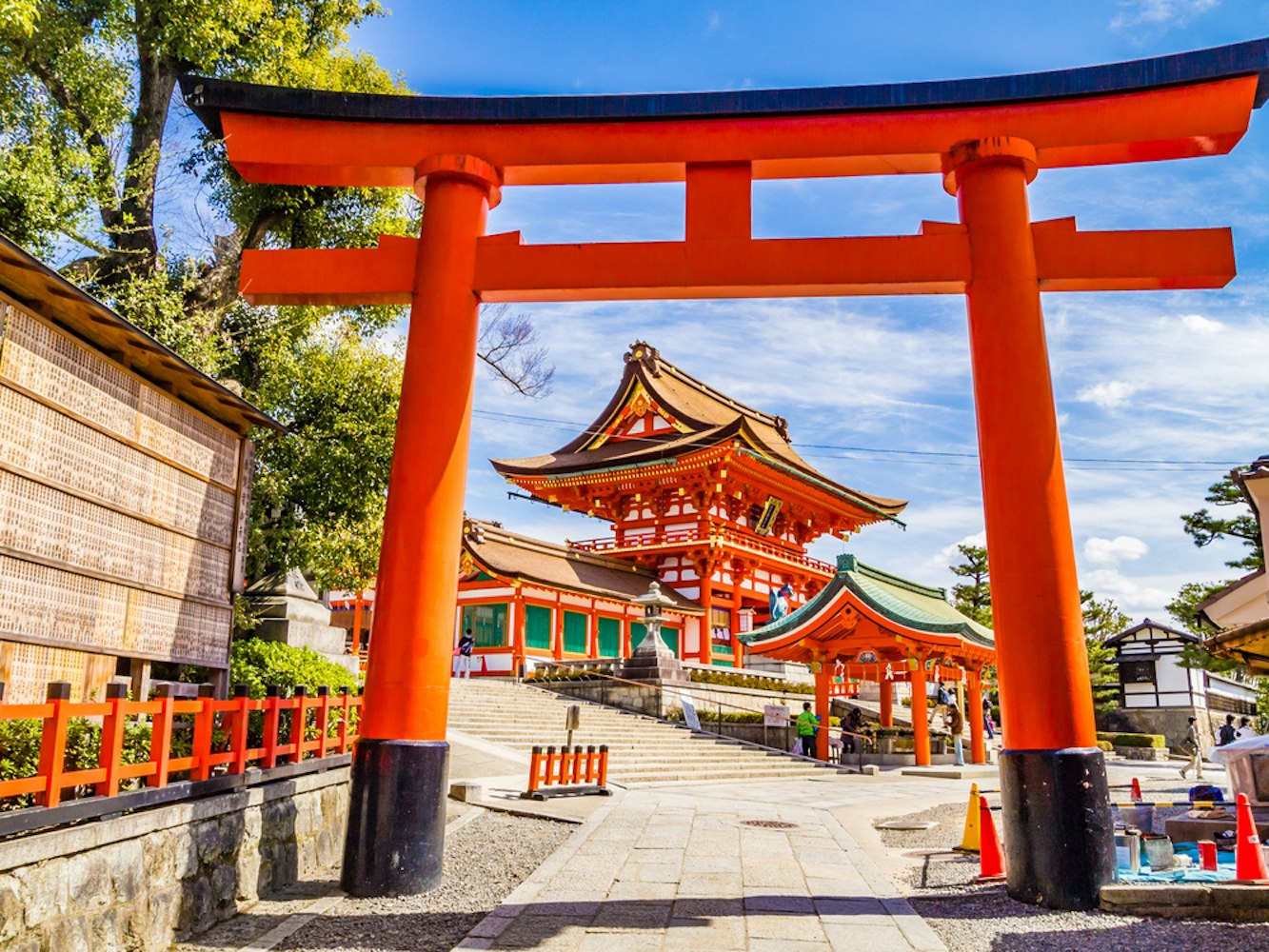
Fushimi Inari Shrine, or Fushimi Inari Taisha, is an important Shinto shrine in southern Kyoto dedicated to Inari, the deity of rice and business prosperity. This shrine is renowned for its thousands of striking vermilion torii gates, which create a network of trails on the sacred Mount Inari.
Bright orange Torii gates at Fushimi Inari, predating Kyoto's establishment as the capital in 794, is the principal shrine among thousands across Japan dedicated to Inari. Additionally, the shrine features fox statues, believed to be Inari's messengers, and its historical significance includes being a favored donation site for emperors in ancient times.
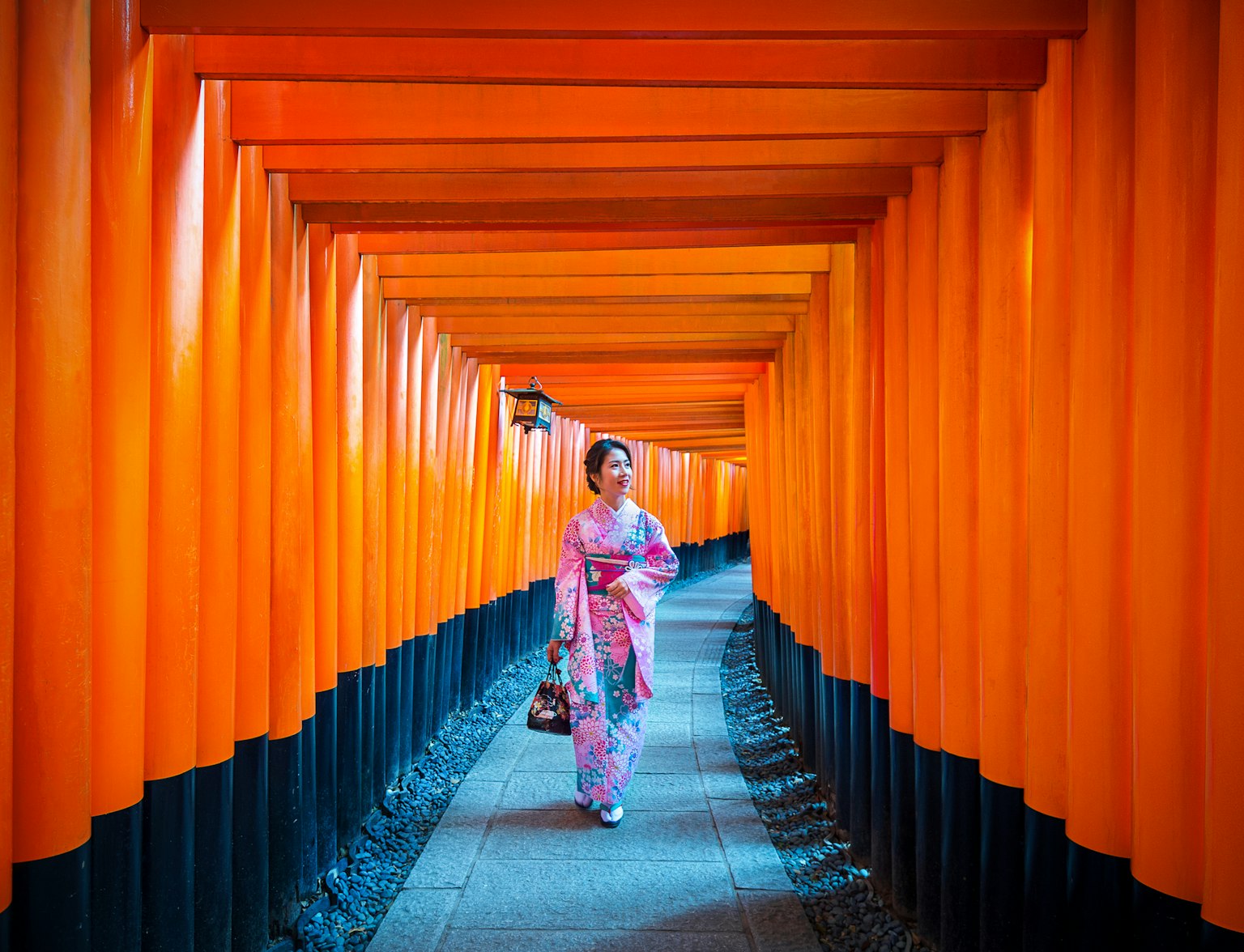
Step off the beaten path and join us for an extraordinary hike through Fushimi Inari's hidden trails!
Kiyomizu-dera Temple
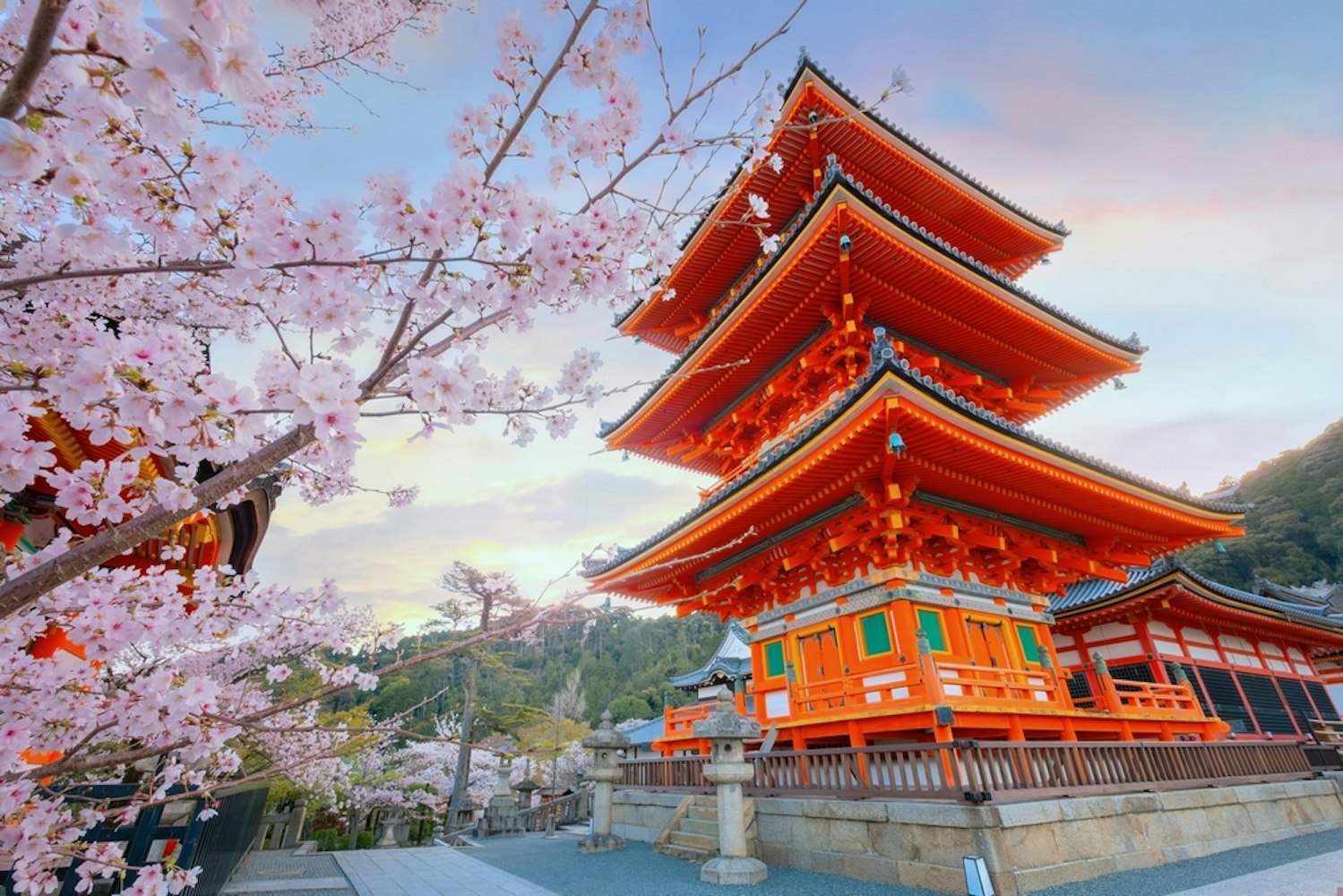
Renowned as the "Pure Water Temple," Kiyomizu-dera stands amidst the lush hills east of Kyoto and is celebrated as one of Japan's most distinguished temples. Founded in 780 near the Otowa Waterfall, the temple's name derives from the fall's pure waters.
It is famous for its wooden stage, built without nails, jutting out from its main hall 13 meters above the hillside, offering stunning views of Kyoto and the surrounding cherry and maple trees. The temple, a UNESCO World Heritage site since 1994, houses a revered statue of the eleven-faced, thousand-armed Kannon. It is also known for the Otowa Waterfall, where visitors drink from its waters for health, longevity, and success.
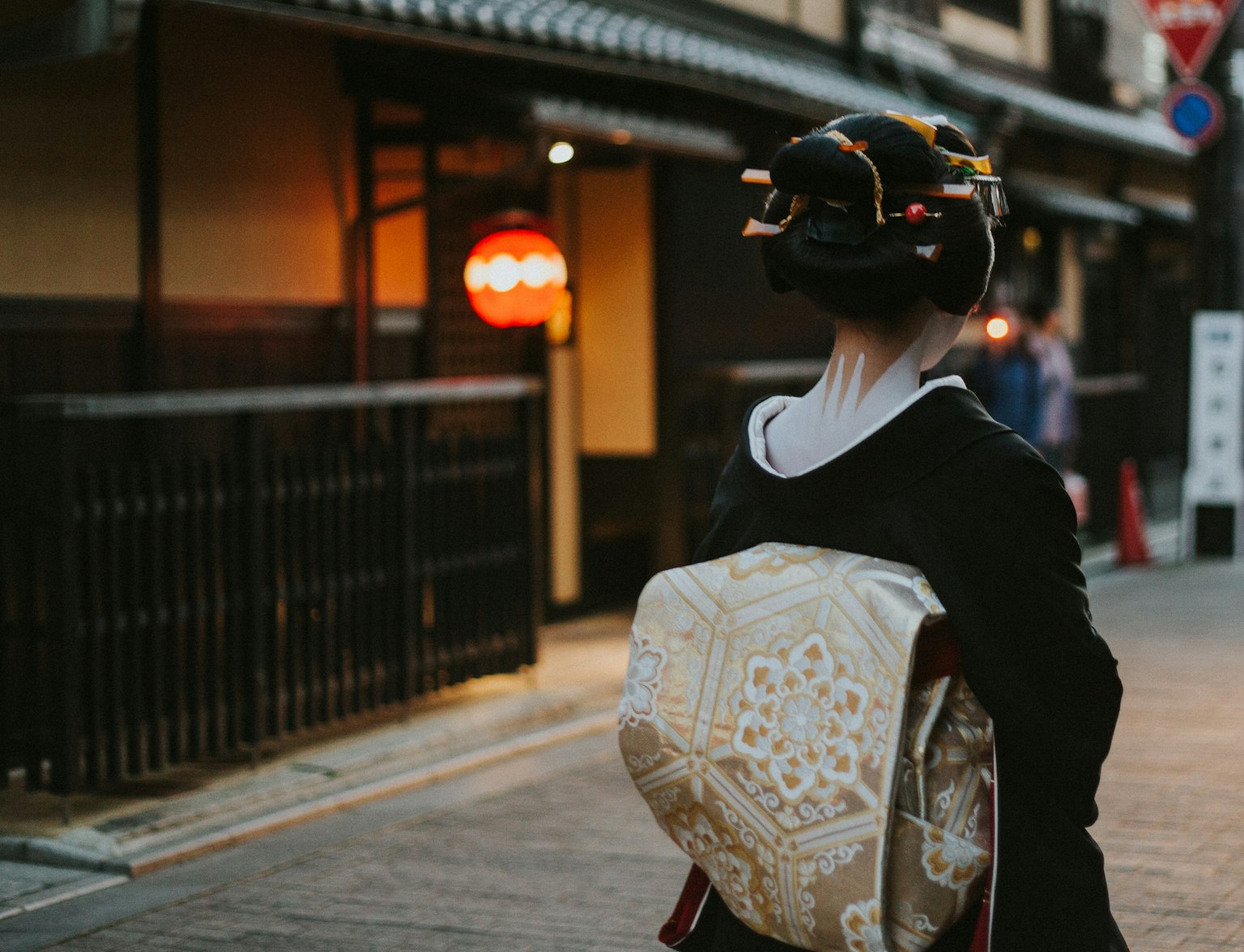
Visit Kiyomizu-dera temple and take in the breathtaking view of Kyoto from its terrace.
Ryoan-ji Temple
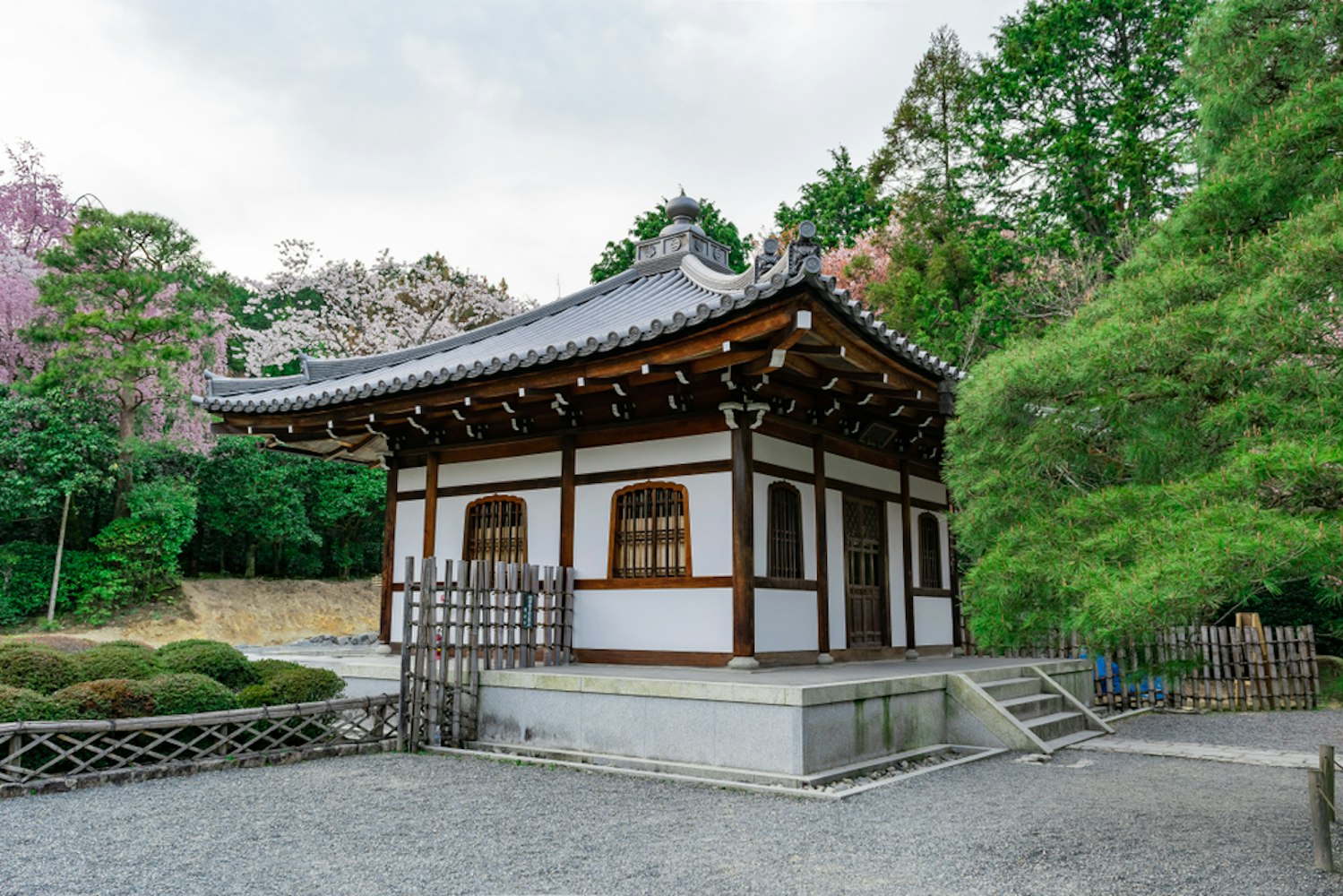
Ryoan-ji Temple, located in Kyoto, Japan, is renowned for its iconic "kare-sansui," or dry landscape rock garden, a quintessential example of Zen Buddhist design. This garden is particularly famous for its fifteen strategically placed rocks, set amidst raked white gravel, creating a serene and contemplative atmosphere.
The arrangement of these rocks is such that, from any vantage point at the viewing platform, one cannot see all fifteen stones at once, adding to the garden's mystique and symbolic significance. Additionally, Ryoan-ji's extensive temple grounds include larger gardens with lush trees and moss and the Kyoyo-chi pond, which is especially beautiful in autumn, offering visitors a peaceful retreat and an opportunity for reflection.
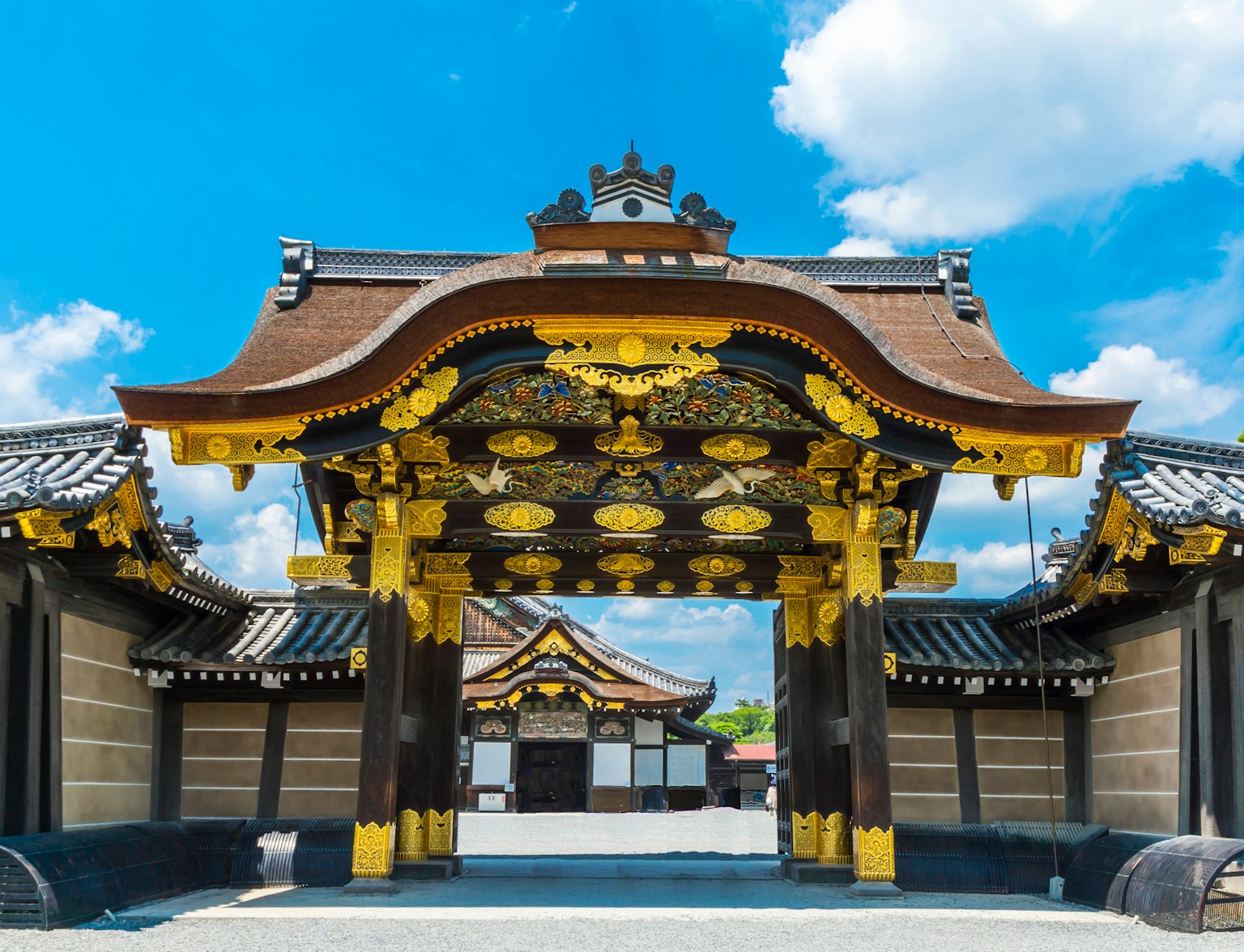
Visit Ryoanji temple for a unique rock garden experience!
Tenryu-ji Temple
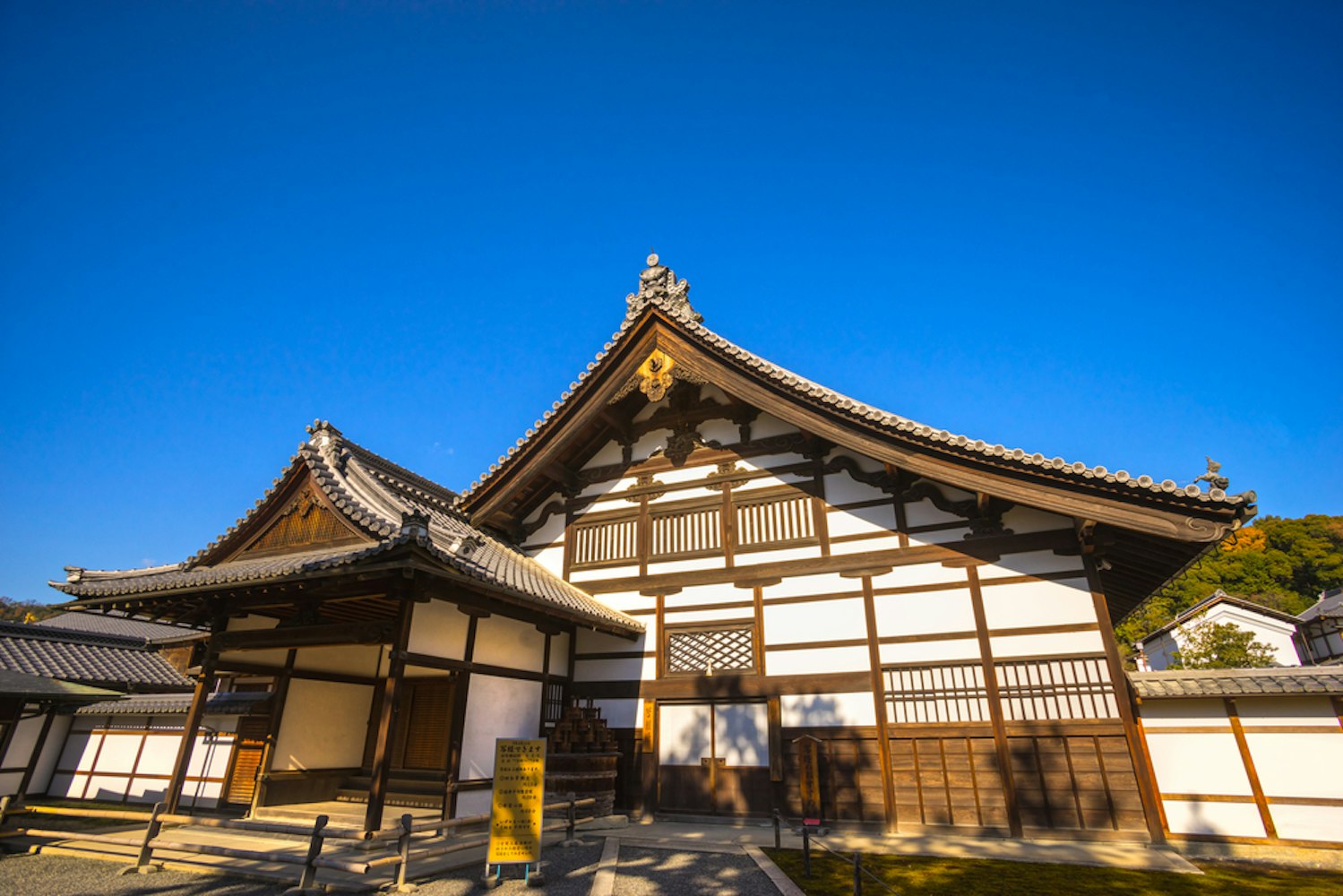
Tenryu-ji Temple, a significant temple of the Rinzai School of Zen Buddhism, is situated in Kyoto's scenic Arashiyama district. Established in 1339 on Emperor Go-Daigo's former villa site, the temple was founded by the ruling shogun Ashikaga Takauji.
Its most notable feature is the Zen garden, dating back to the 14th century, which includes a large pond reflecting the surrounding maple trees and rocks and "borrowed scenery" from the nearby Arashiyama hills. This garden, which has remained unchanged through the centuries, is a masterpiece of design and serves as a prototype for many subsequent Japanese gardens.
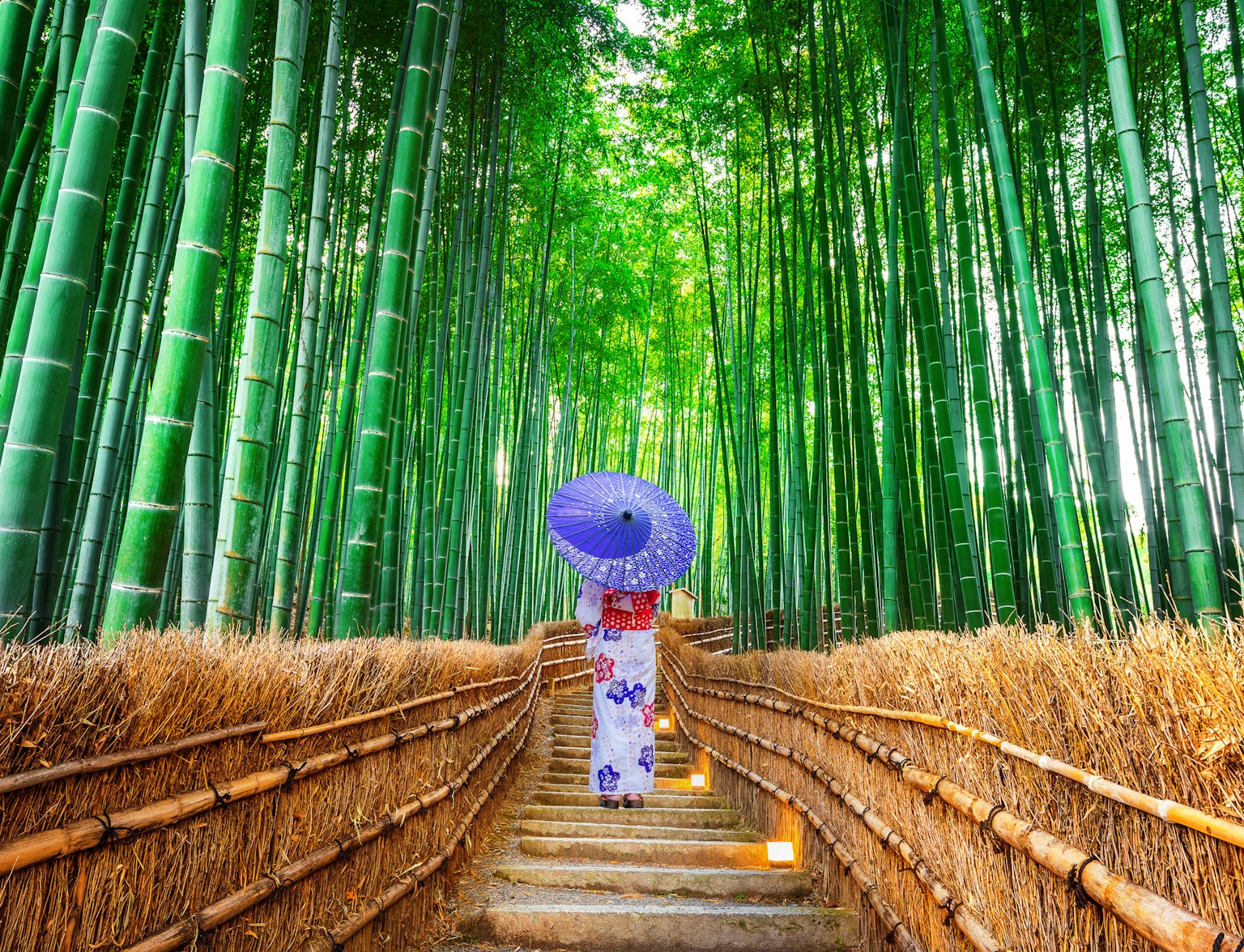
See Tenryuji Temple, one of Japan's distinguished Zen Buddhist temples.
Kennin-ji Temple
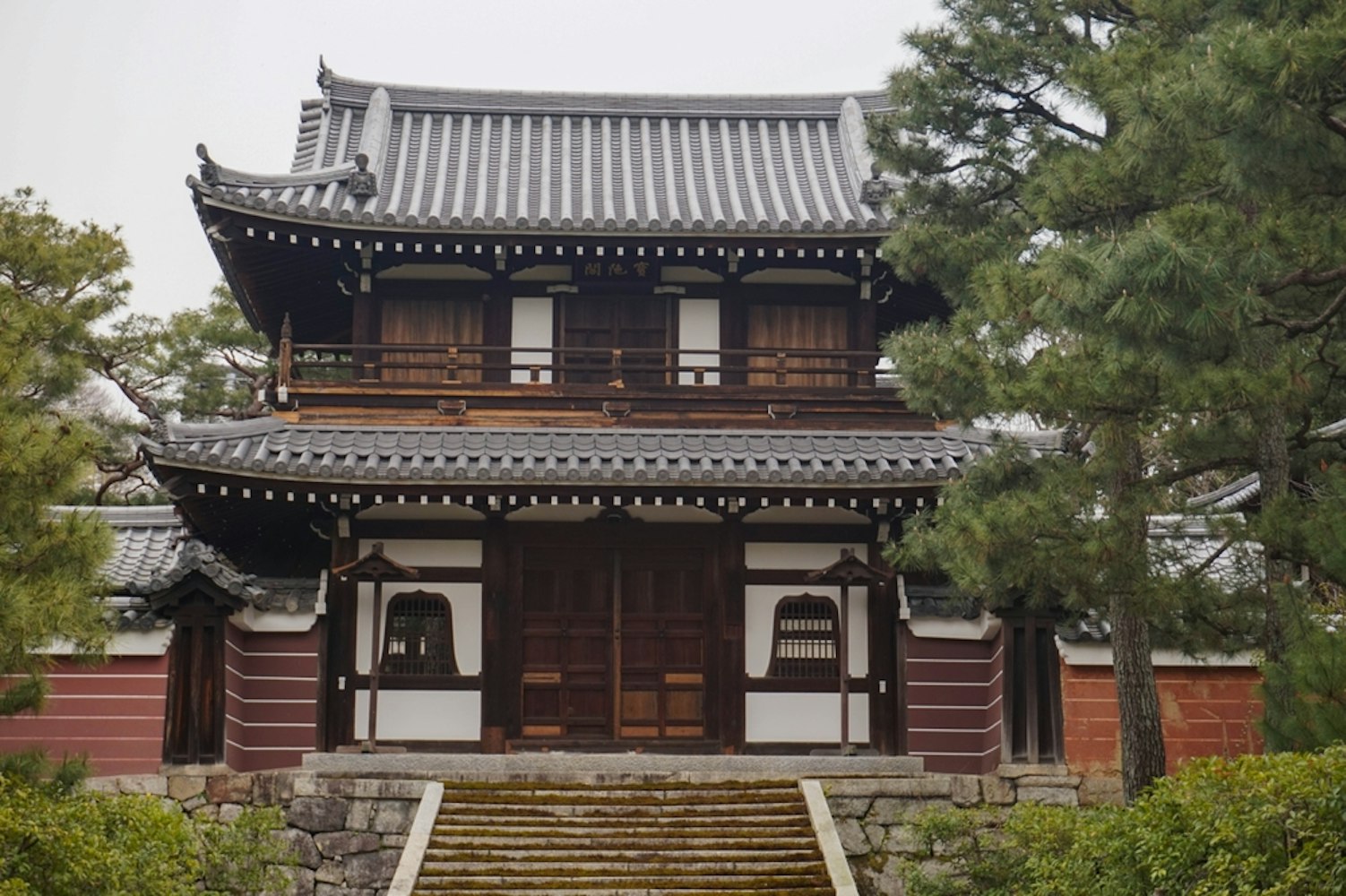
Kennin-ji Temple, nestled just south of Kyoto's famed Gion district, is the city's oldest Zen temple. Founded in 1202 by the Buddhist monk Eisai, credited with introducing Zen Buddhism and tea cultivation to Japan, Kennin-ji initially combined Zen with Tendai and Shingon Buddhism.
It later became a purely Zen temple under the leadership of its 11th abbot. The temple is renowned for its art and architecture, including a striking ceiling painting of twin dragons and the iconic Wind and Thunder Gods screen. Over its long history, Kennin-ji has undergone several reconstructions due to fires and wars, with most of its current buildings dating from the late 1500s to the mid-1700s
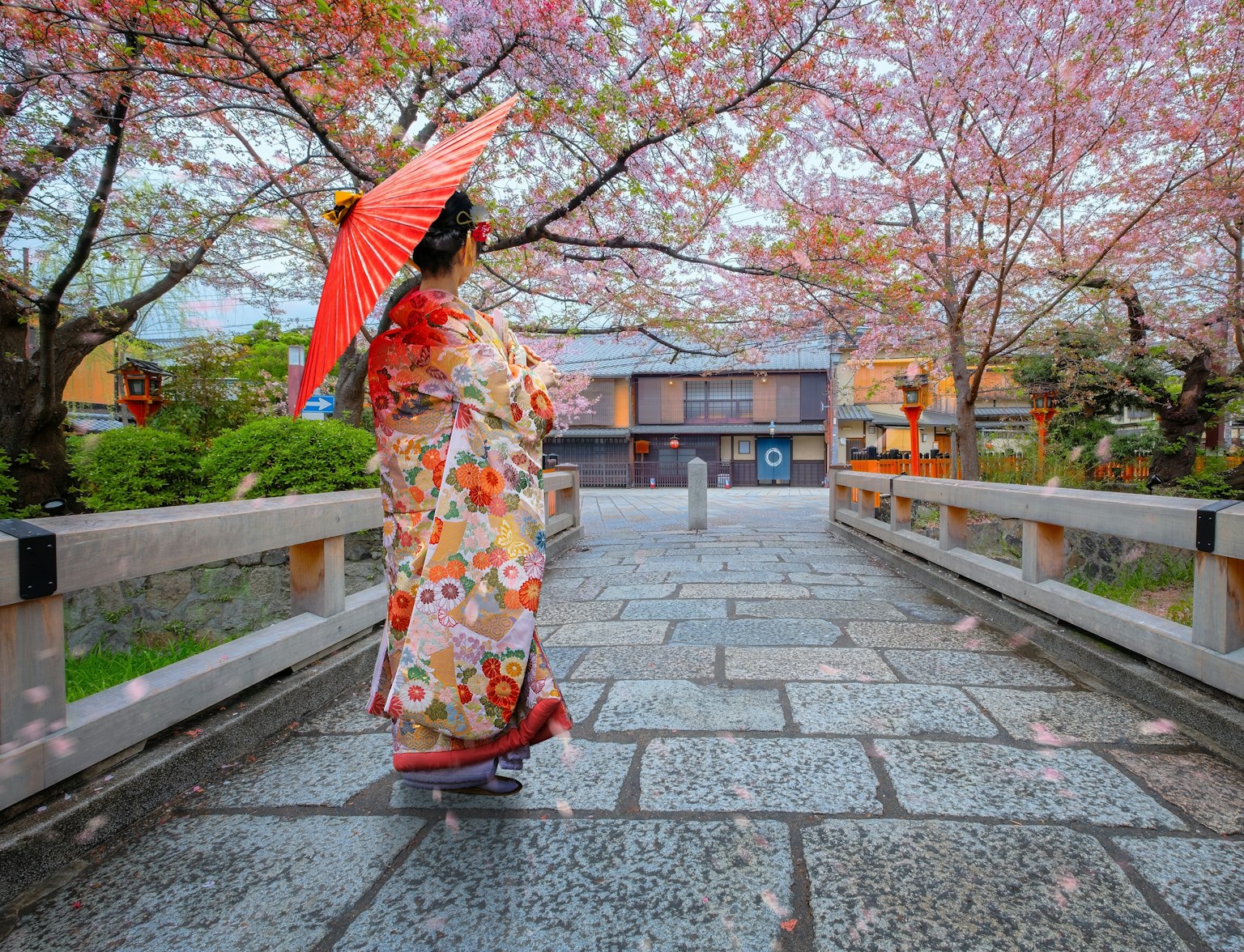
Discover the tranquility of the Kenninji Zen Buddhist Temple, established in 1202.
Tofuku-ji Temple
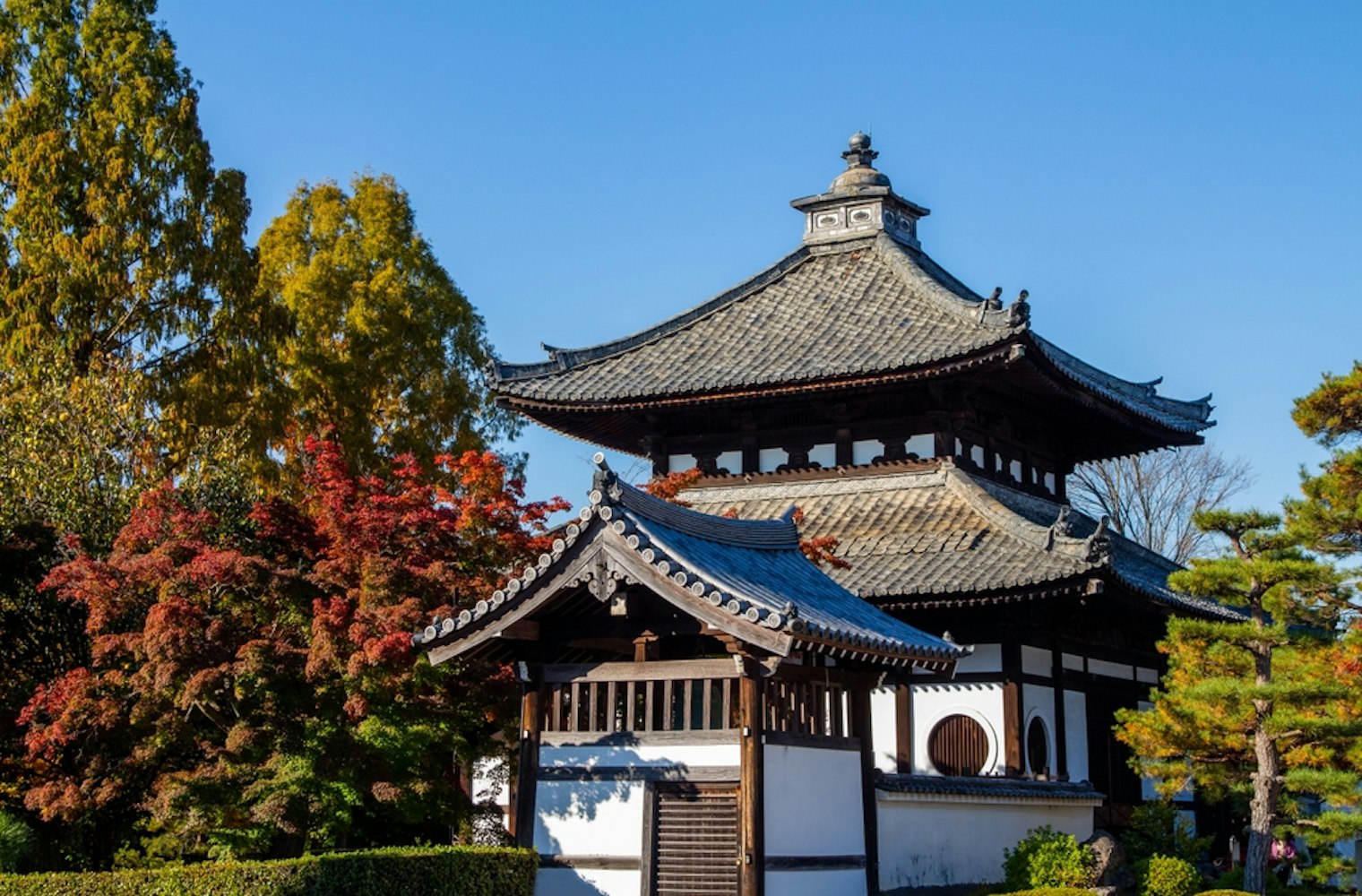
Tofuku-ji Temple, established in 1236 by the priest Enni Ben'en, is a significant Zen Buddhist temple in Kyoto. It is renowned as the head temple of the Tofuku-ji branch of Rinzai Zen Buddhism and is one of the Five Mountains of Rinzai Zen in Kyoto.
The temple is famous for its stunning autumn foliage, particularly around the Tsutenkyo Bridge, and boasts several impressive landscaped gardens. Notably, Tofuku-ji Temple features Japan's oldest Zen main gate, the Sanmon, which was built in 1425 and is a remarkable example of Buddhist architecture.
Heian Shrine
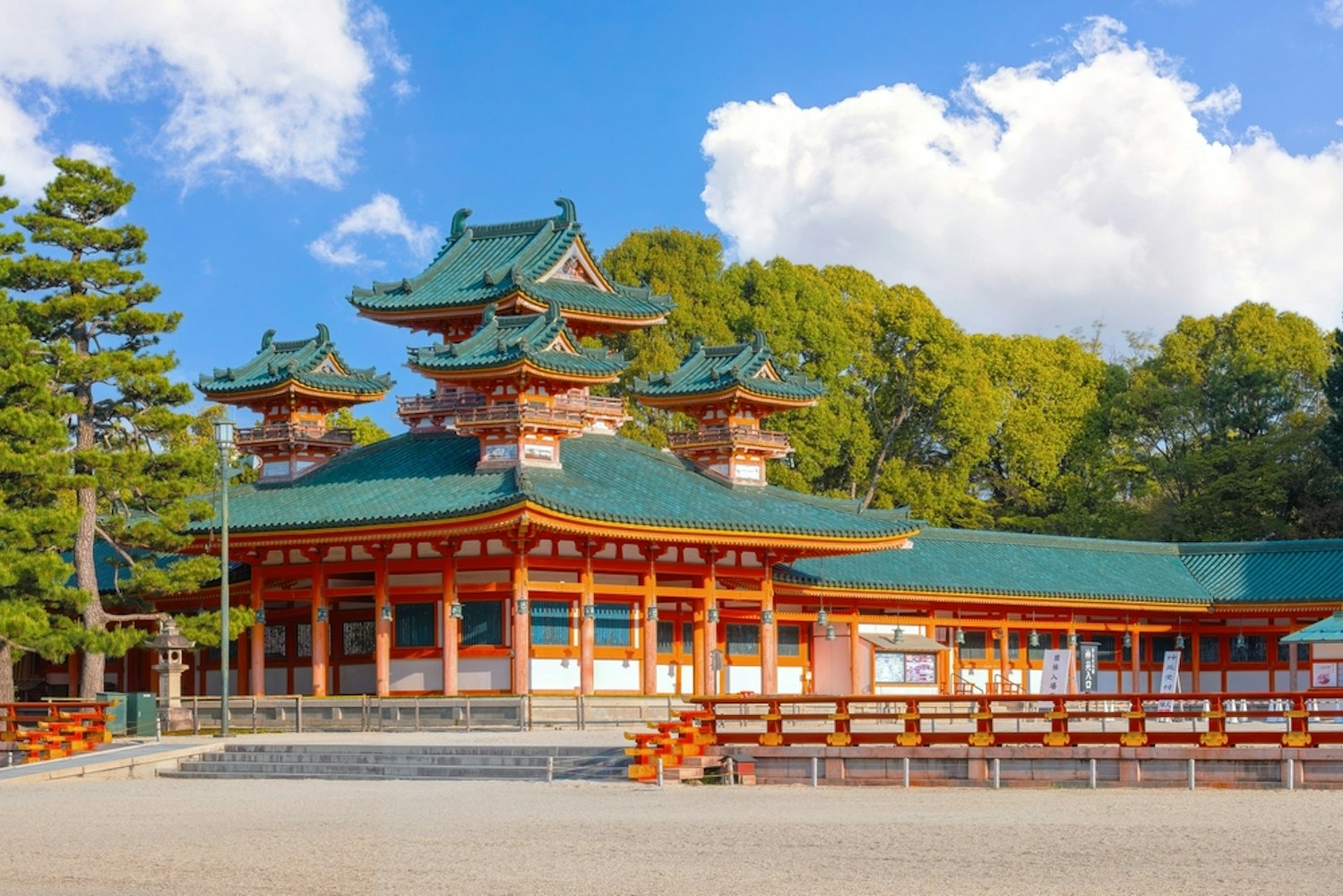
Heian Shrine, located in Kyoto, Japan, is a relatively recent addition to Kyoto's rich tapestry of sacred sites, constructed in 1895. It was built to commemorate the 1100th anniversary of Kyoto's founding as Heian Kyo. It is dedicated to the first and last Emperors who ruled from the city, Emperor Kammu and Emperor Komei.
The shrine's architecture is a partial replica of the Imperial Palace from the Heian Period, featuring richly-colored buildings and a spacious court, surrounded by extensive, intricately designed gardens in the four cardinal directions. Notably, the shrine's massive torii gate, one of the largest in Japan, and the Shin'en Garden, a representation of Meiji Period garden design, are significant attractions.
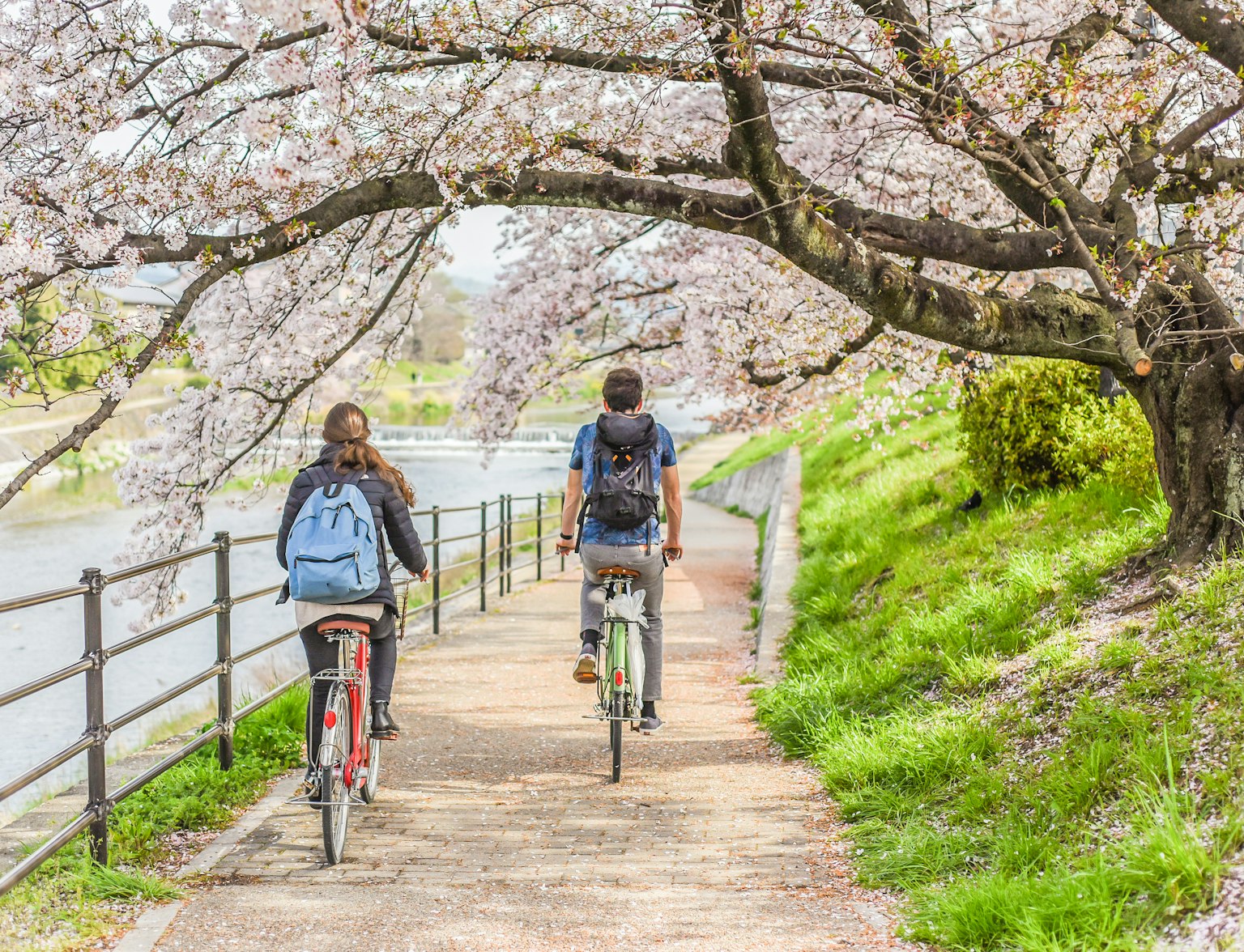
Soak in the tranquility of revered temples including Heian Shrine.
Nanzen-ji Temple
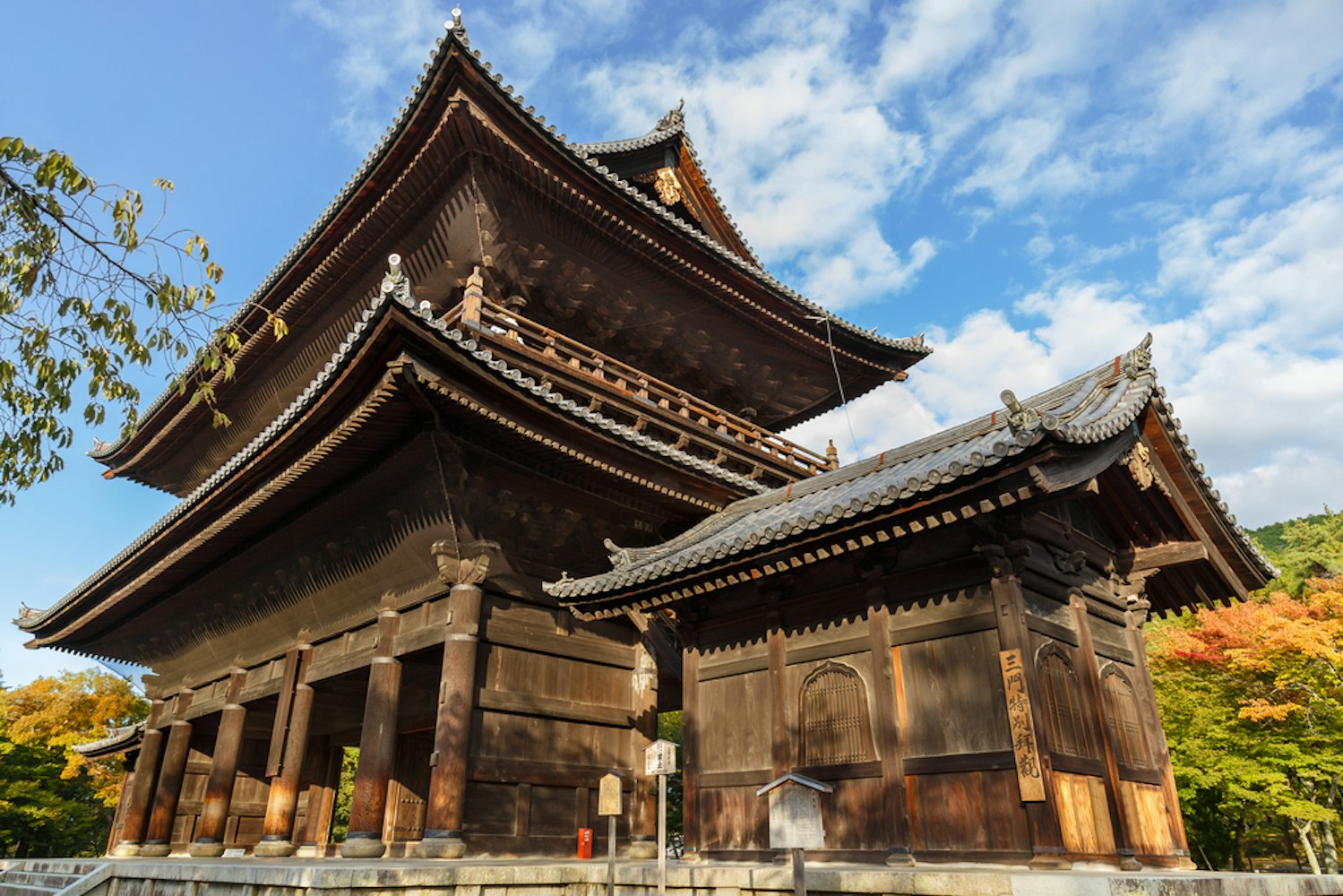
Nanzen-ji, initially known as Zenrinzen-ji, is a prominent Zen Buddhist temple in Kyoto's Higashiyama area. Established in 1291 by Emperor Kameyama on the site of his former detached palace, Nanzen-ji has become one of Japan's most significant Rinzai Zen temples.
The temple is notable for its sanmon gate, an exquisite European-style canal, and multiple sub-temples, each offering unique experiences. Despite suffering numerous destructions by fire during the Muromachi period, Nanzen-ji's current architecture mainly dates from the 17th century onwards, continuing to stand as a vital center for Rinzai Zen Buddhism.
Eikando Temple
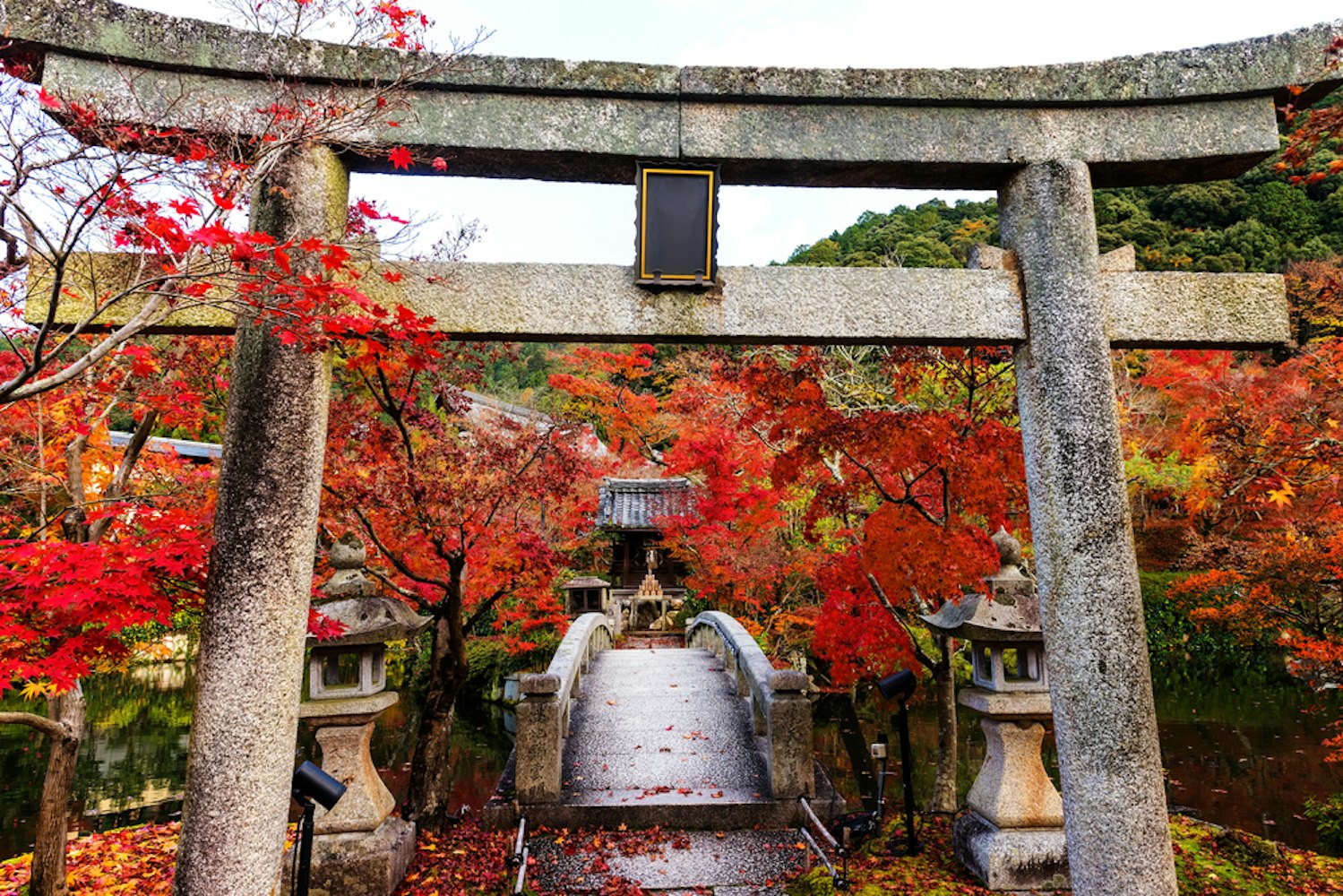
Eikando Temple, also known as Zenrin-ji, is a prominent temple in Kyoto belonging to the Jodo-shu Seizan-Zenrinji school of Buddhism. Initially established as a training center for Esoteric Buddhism of the Shingon sect in 853, it was later converted to the Jodo sect by Eikan, its seventh abbot.
Eikando is particularly famous for its autumn colors and the unique Mikaeri Amida Nyorai statue, which depicts the Amida Buddha looking back over his shoulder. The temple is also known for its seasonal illumination event, enhancing its allure during fall.
Sanjusangen-do Temple
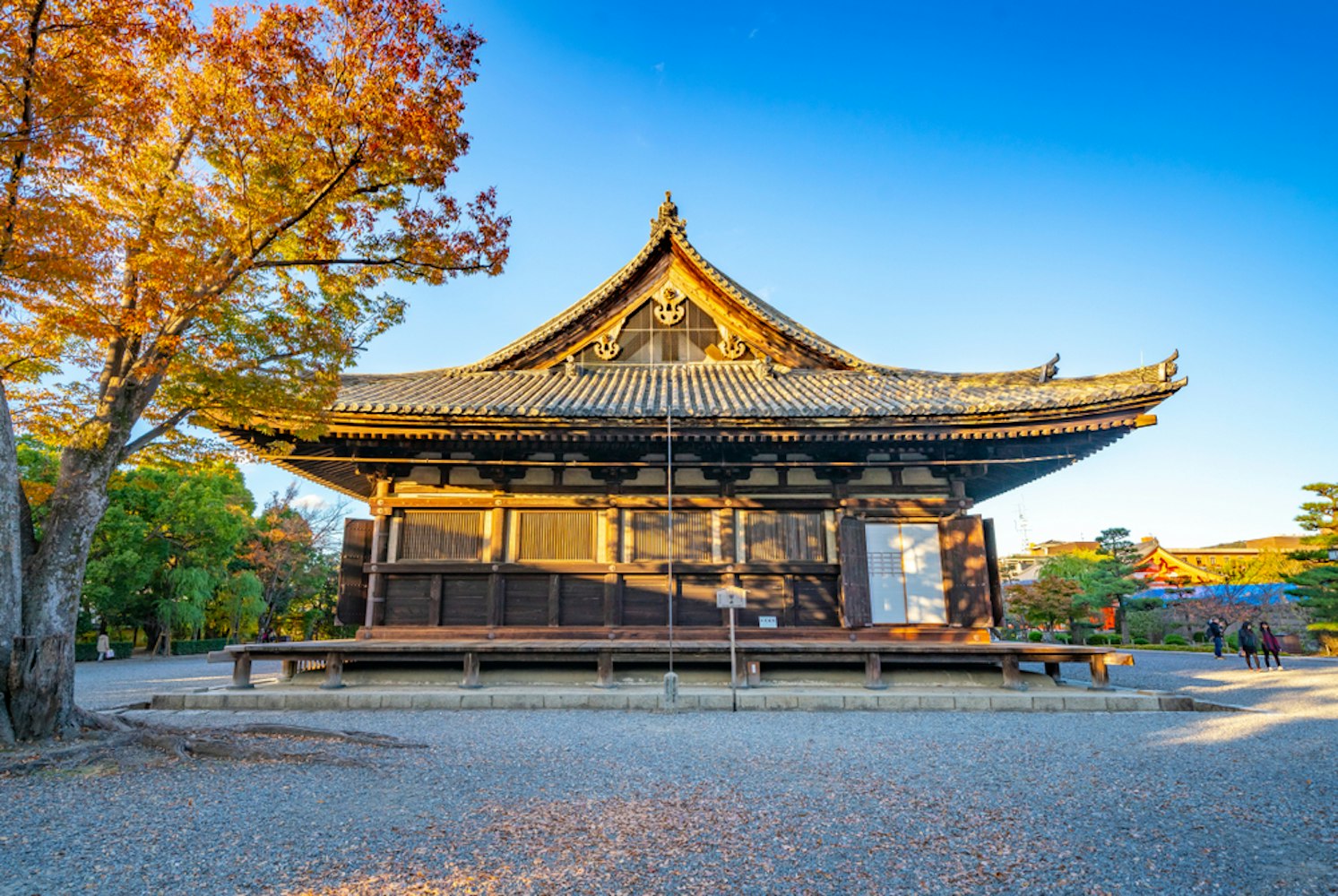
Sanjusangen-do, officially known as Rengeo-in, is a notable Buddhist temple in Kyoto, renowned for housing 1,001 statues of Kannon, the goddess of mercy. This temple, established in 1164 and later rebuilt after a fire in the 13th century, boasts Japan's most extended wooden structure, which measures 120 meters.
The name Sanjusangen-do, meaning "33 intervals", comes from the number of spaces between the building's columns. Inside, the main hall features a giant central statue of a thousand-armed Kannon, surrounded by rows of 1,000 life-size deity statues, all intricately made from Japanese cypress and adorned in gold leaf.
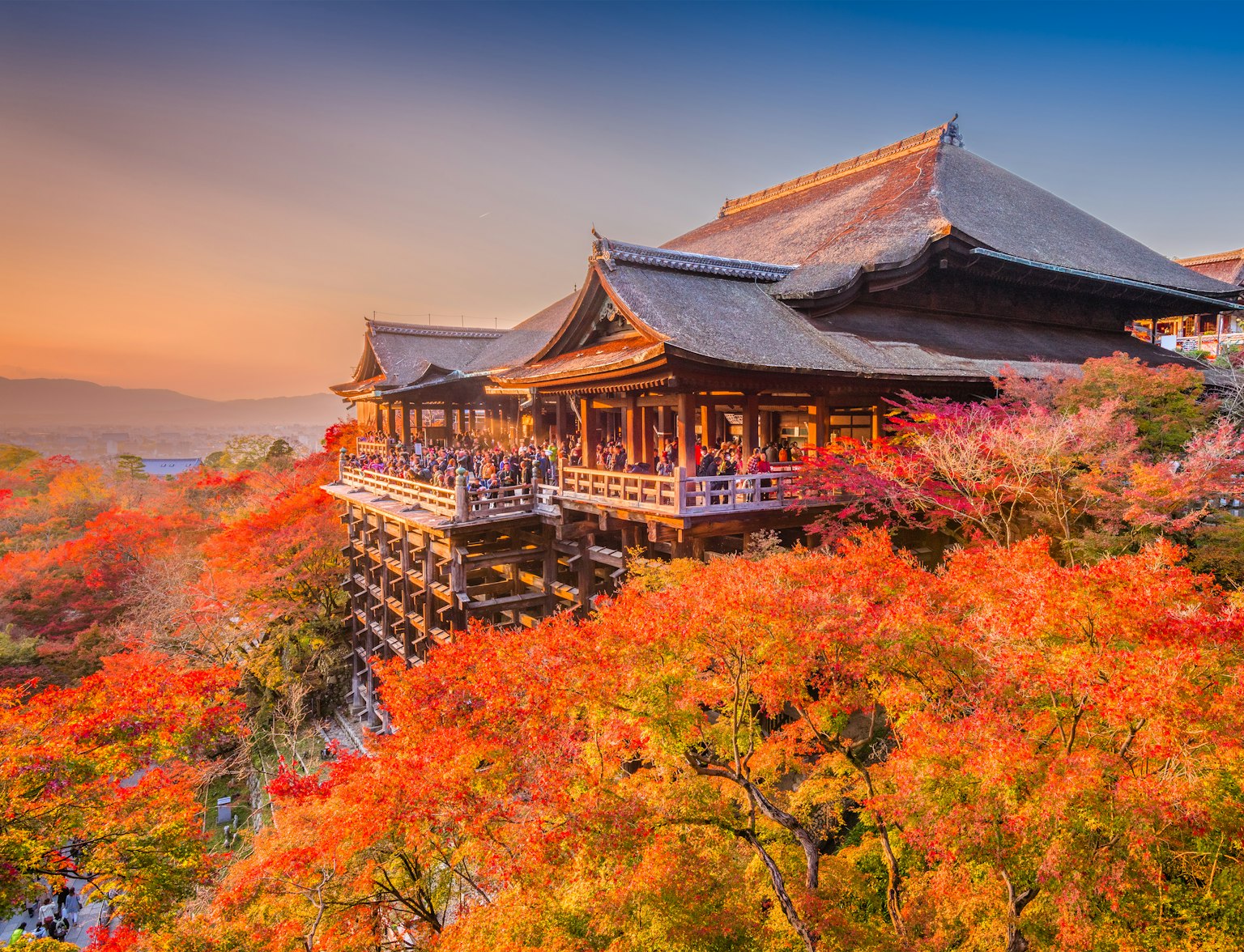
Visit Sanjusangen-do Temple through a hop-on hop-off bus.
Yasaka Shrine
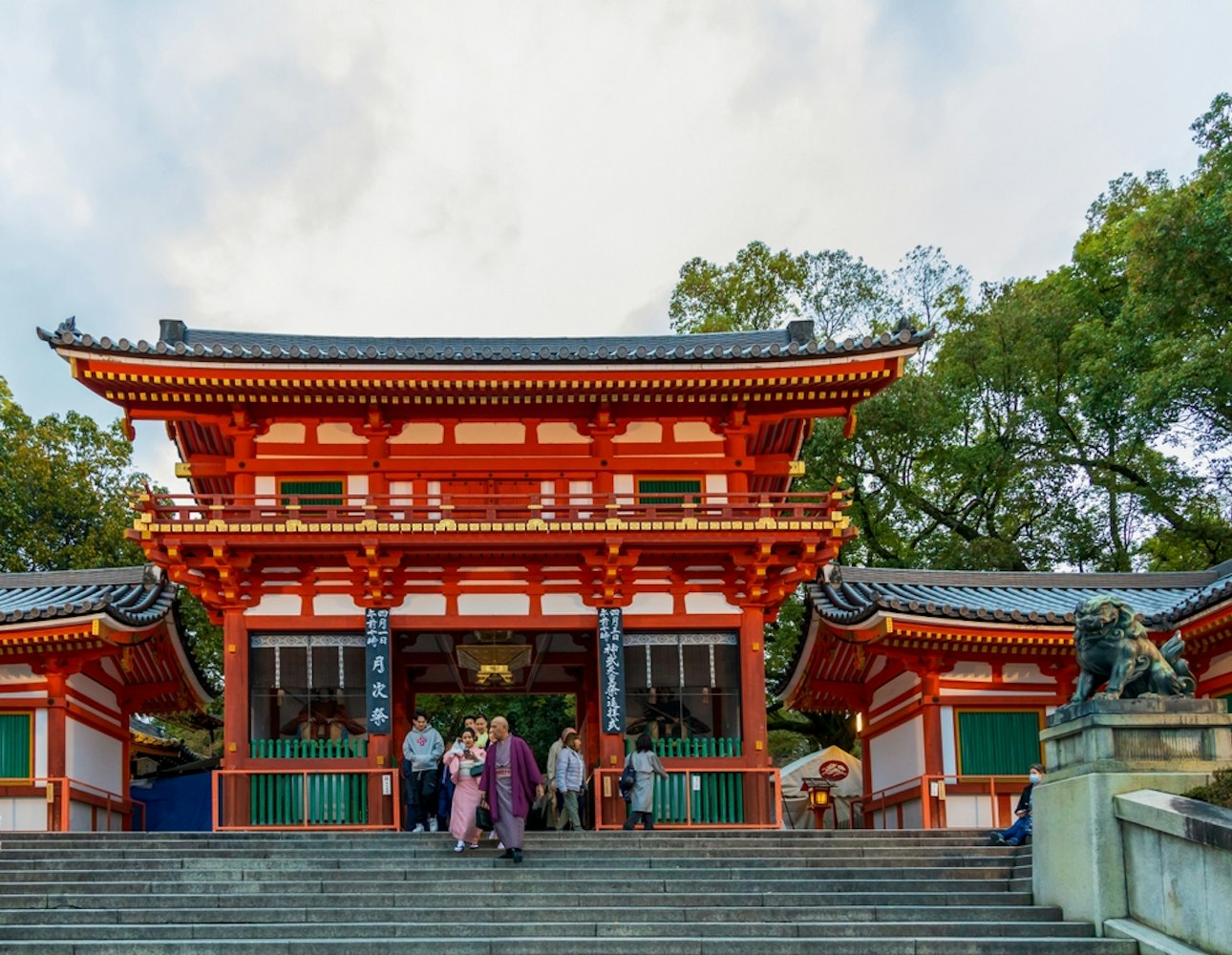
Gion Shrine, commonly known as Yasaka Shrine, is a significant Shinto shrine in Kyoto's Gion District. The shrine's history possibly dates back to 656, during the Asuka Era, when the spirit of the deity Susanoo-no-mikoto was believed to have been brought to the site.
Yasaka Shrine is renowned for its role in the Gion Matsuri, one of Japan's most famous festivals celebrated annually in July. The festival, dating back a thousand years, features a procession with giant floats and hundreds of participants, highlighting the shrine's cultural and historical importance in Kyoto.
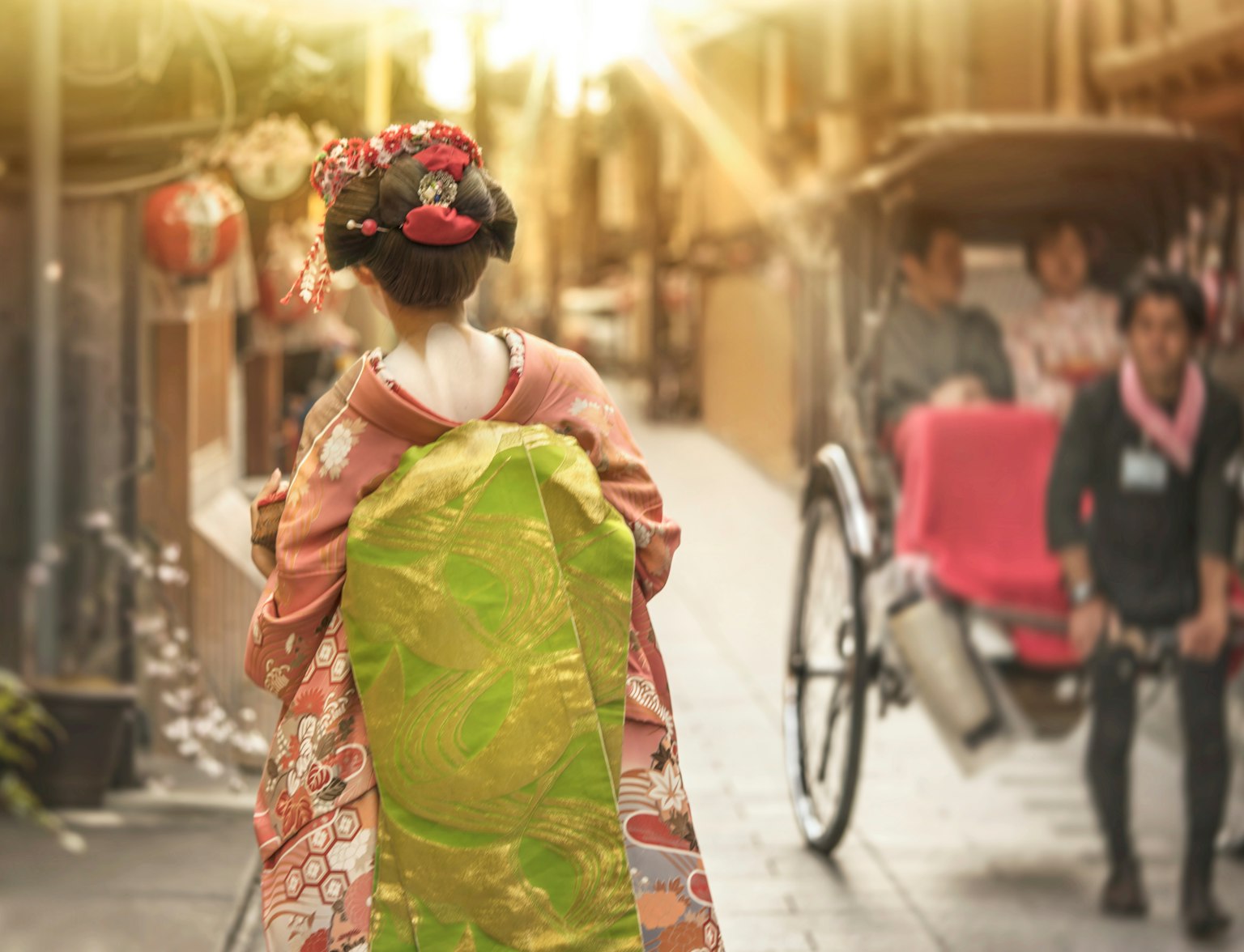
Explore Yasaka Shrine with a rickshaw ride.
Shoren-in Temple
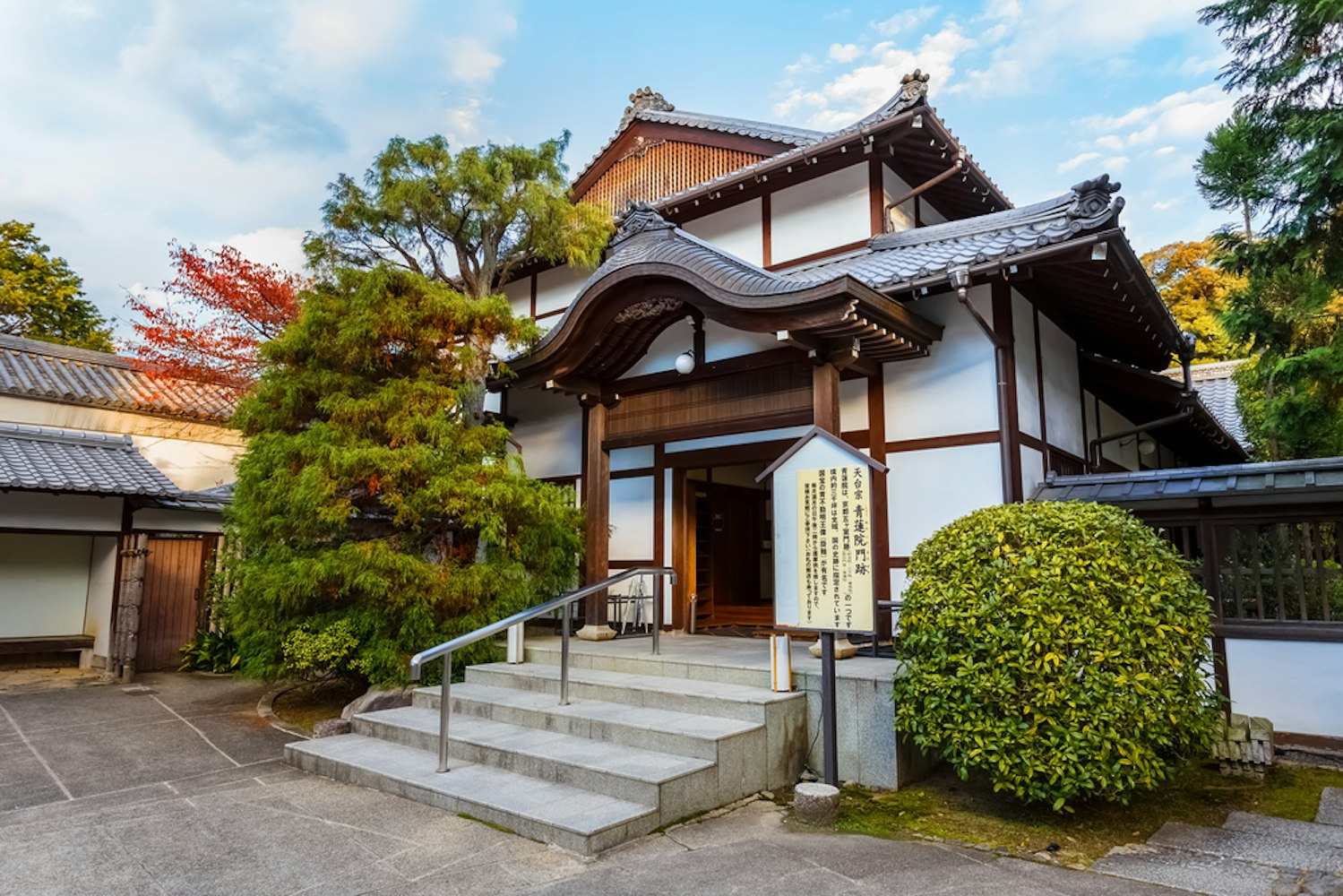
Shoren-in Temple, located in Kyoto's Higashiyama district, is a significant site of the Tendai sect of Japanese Buddhism. Traditionally, its head priests have been members of the imperial family, reflecting its close ties to Japan's imperial history.
The temple offers a serene experience, winding through various temple buildings and gardens. Visitors can appreciate the temple's architectural and artistic features, including the Kachoden drawing room with its fusuma paintings, and stroll through beautifully maintained gardens with features like a moss garden and a bamboo grove.
Chion-in Temple
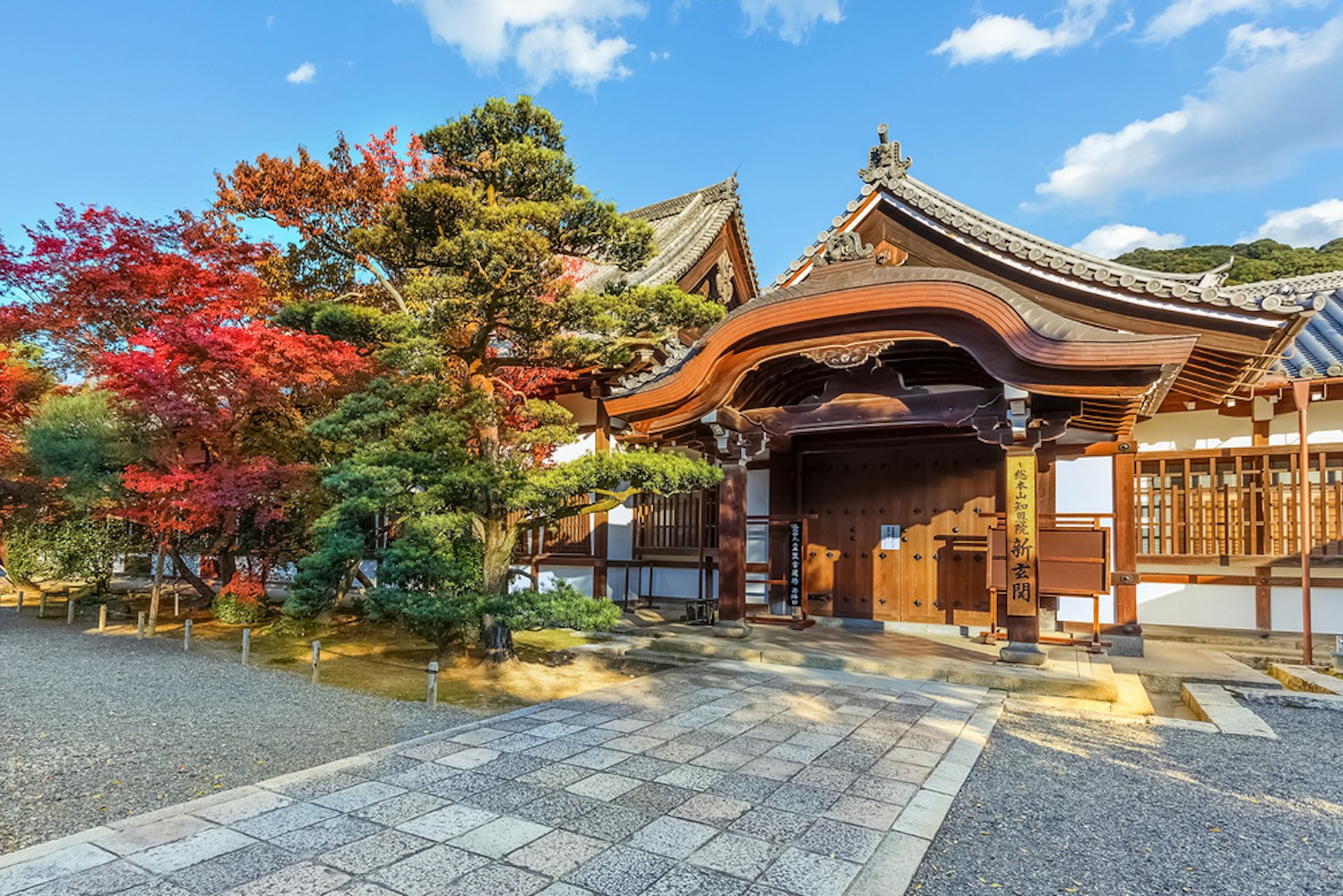
Chion-in Temple, located in the Higashiyama district of Kyoto, is the head temple of the Jōdo Shū (Pure Land Sect) of Buddhism, founded by Hōnen. It's known for its vast grounds and large structures, including the massive Sanmon Gate, Japan's giant wooden temple gate.
The temple's Miedo Hall houses a statue of Hōnen, and the Amidado Hall contains a statue of Amida Buddha, the central deity of the Jōdo sect. Chion-in is significant not only for its religious importance but also for its historical and cultural value, having received donations from the Tokugawa shogunate during the early Edo period and being constructed by master artisans of that era.
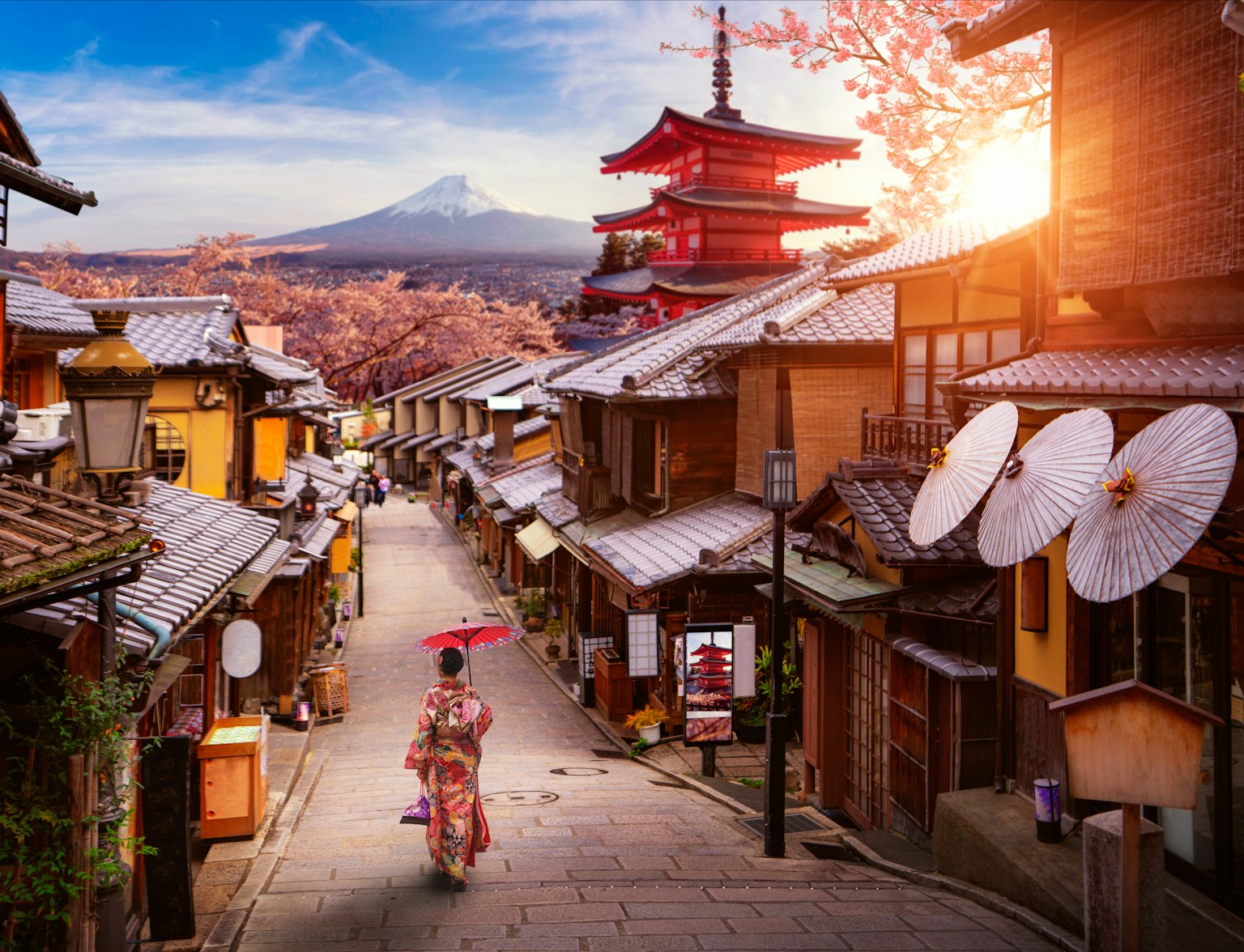
Learn more about Chion-in Temple with a private guide.
Enryaku-ji Temple
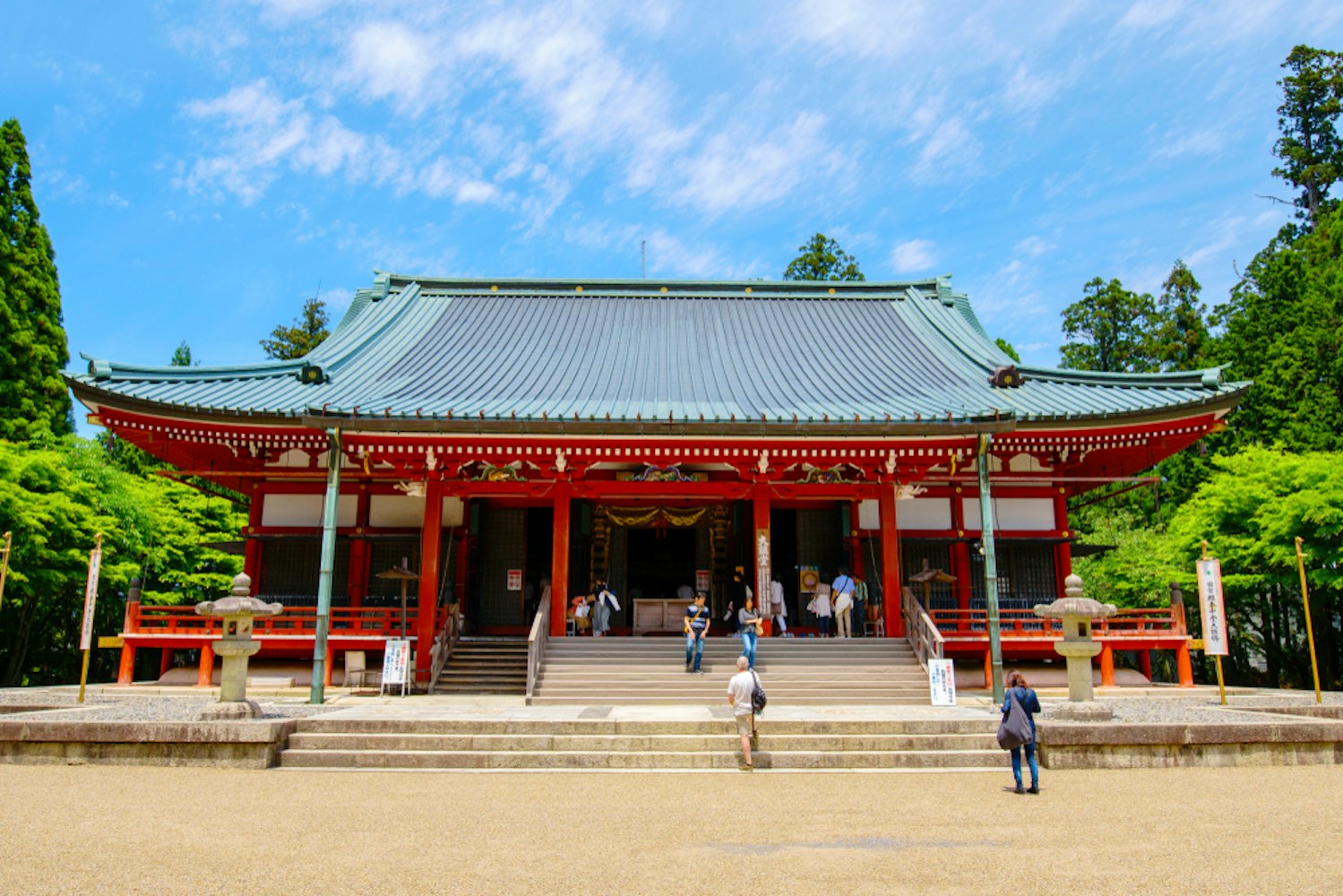
Enryaku-ji Temple on Mount Hiei is a significant spiritual center of Japanese culture and a vital part of its religious history. Founded in 788 by the priest Saicho, upon request by Emperor Kammu, it originally served as a protective station against evil spirits for the then newly-founded capital, Heian-kyo (now Kyoto).
This temple, which became the headquarters of the Tendai School of Buddhism, was once a sprawling complex with over 3000 buildings and a large population of monks. However, in 1571, it faced destruction at the hands of warlord Oda Nobunaga, resulting in a loss of much of its structure and reducing it to a fraction of its former glory; despite this, Enryaku-ji continues to exude an aura of power and mystery, holding a significant place in Japan's intellectual and religious history.
Daigo-ji Temple
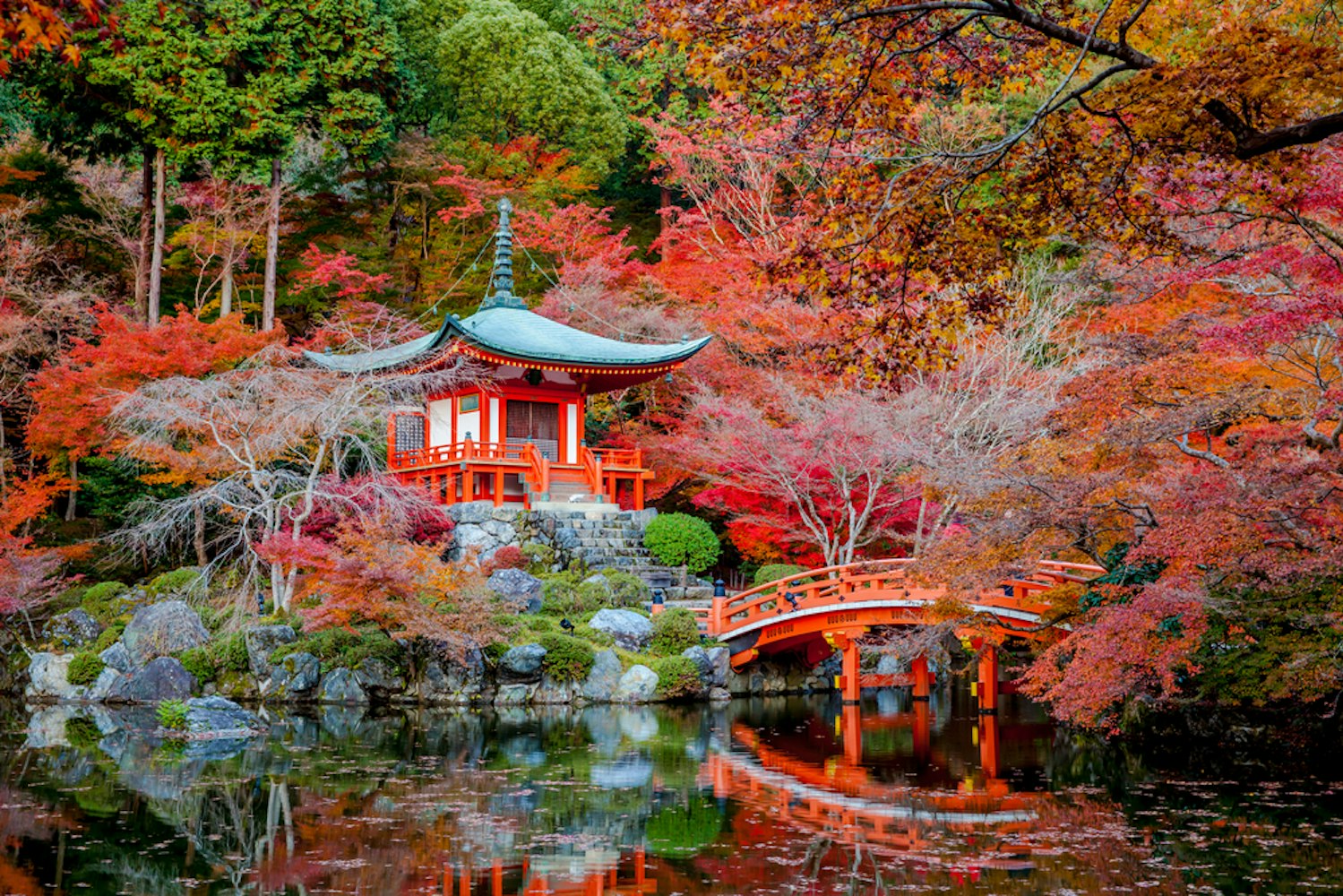
Daigo-ji is a significant Shingon Buddhist temple in Kyoto, designated as a World Heritage Site. It encompasses an extensive complex in the southeastern part of the city, including lower (Shimo-Daigo) and upper (Kami-Daigo) sections on a mountainside.
With over 1,100 years of history, this temple houses multiple buildings and treasures designated as National Treasures and Cultural Assets, including a wooden statue of Yakushi Nyorai (the Medicine Buddha). The area is particularly famous for its scenic beauty during cherry blossoms and autumn. It features the oldest wooden structure in Kyoto with documented proof of age, a five-storied pagoda completed in 951.
Best Time To Visit
Kyoto's temples and shrines can be enjoyed year-round, but each season offers a unique experience. Spring brings the famous cherry blossoms, painting the temple grounds in soft pink hues.
Autumn is equally spectacular, with the leaves turning fiery red and orange. Avoid the most crowded times by visiting early in the morning or late in the afternoon.
Tips on Visiting Temples and Shrines
Respect the customs: Remember to wear your shoes when entering certain temple buildings and behave respectfully.
Entrance fees: Many temples in Kyoto have a small entrance fee. It's worth purchasing a combination ticket where available.
Dress appropriately: Conservative attire is recommended, especially when visiting important Zen temples or Shinto shrines.
How to Get in Kyoto
1. Shinkansen (Bullet Train): The fastest and most popular way to travel from Tokyo to Kyoto station is via the Shinkansen, which takes about 2 hours and 15 minutes. The Nozomi Shinkansen is the quickest, followed by the Hikari and Kodama trains. Fares vary, but a one-way ticket typically costs around 14,000 yen for a reserved seat.
2. Highway Bus: You can take a highway bus for a more economical option. This journey takes approximately 7-8 hours and offers a range of comfort levels, from discount to premium buses. Fares for discount buses start at around 3,500 yen, while premium buses can charge up to 10,000 yen.
3. Air Travel: Another option is to fly, especially if you are coming from further away. The closest airport to Kyoto is Osaka's Itami Airport, which is about one hour by bus from central Kyoto. Flights from Tokyo to Osaka take about one hour, typically 9,000 to 14,000 yen, depending on discounts and booking time.
4. By Car: Driving between Tokyo and Kyoto is also an option, taking about 5-6 hours. However, this can be costly due to expressway tolls, which are around 10,000 yen one way.
5. Local Trains: For the adventurous, there's the option of local trains, which involves multiple transfers and takes about 9 hours.
Once in Kyoto, the city has an excellent public transportation system that includes trains, subways, buses, and taxis, making it easy to explore the various attractions.
Kyoto's Temples and Shrines: A Cultural Journey
Visiting the temples and shrines in Kyoto is not just a journey through Japan's religious sites; it's a deep dive into the country's history, culture, and architectural grandeur. Whether it's a day trip or a more extended stay, these sacred sites offer a peaceful escape and a chance to witness the enduring traditions of Japan.
Remember, each temple and shrine in Kyoto has its unique charm, making them an essential part of any Kyoto itinerary.
FAQs
How many temples and shrines are there in Kyoto?
With over 1,600 temples and 400 shrines in Kyoto, picking which ones to visit can be daunting, as preferences vary. It's worth noting that most Kyoto temples are Buddhist temples, often belonging to different Zen sects.
What is the iconic shrine in Japan?
Fushimi Inari-Taisha, a shrine in Kyoto, Japan, and the striking torii gates, painted in vibrant orange, create an iconic scene. These gates, stretching up the slopes of Inari Mountain, are a defining feature and a major attraction, drawing visitors from various backgrounds to this historical spot overlooking Kyoto.
What is the dress code for the shrines in Kyoto?
While Japanese temples and shrines don't enforce a strict dress code, it's advisable to opt for both comfortable and modest clothing. Bearing in mind that these are places of worship frequently visited by people for prayer, dressing respectfully is critical.
What is the purpose of shrines in Japan?
Shinto shrines, known as jinja in Japanese, serve as both places of worship and abode for the kami, the deities of the Shinto religion. Within the most sacred area of these Kyoto shrines, objects symbolizing the kami are kept, typically hidden from public view.
Can you take pictures of shrines in Japan?
Photography is generally allowed on temple grounds but not inside the buildings. Look for signs indicating photography rules or inquire with temple staff for clarification.



